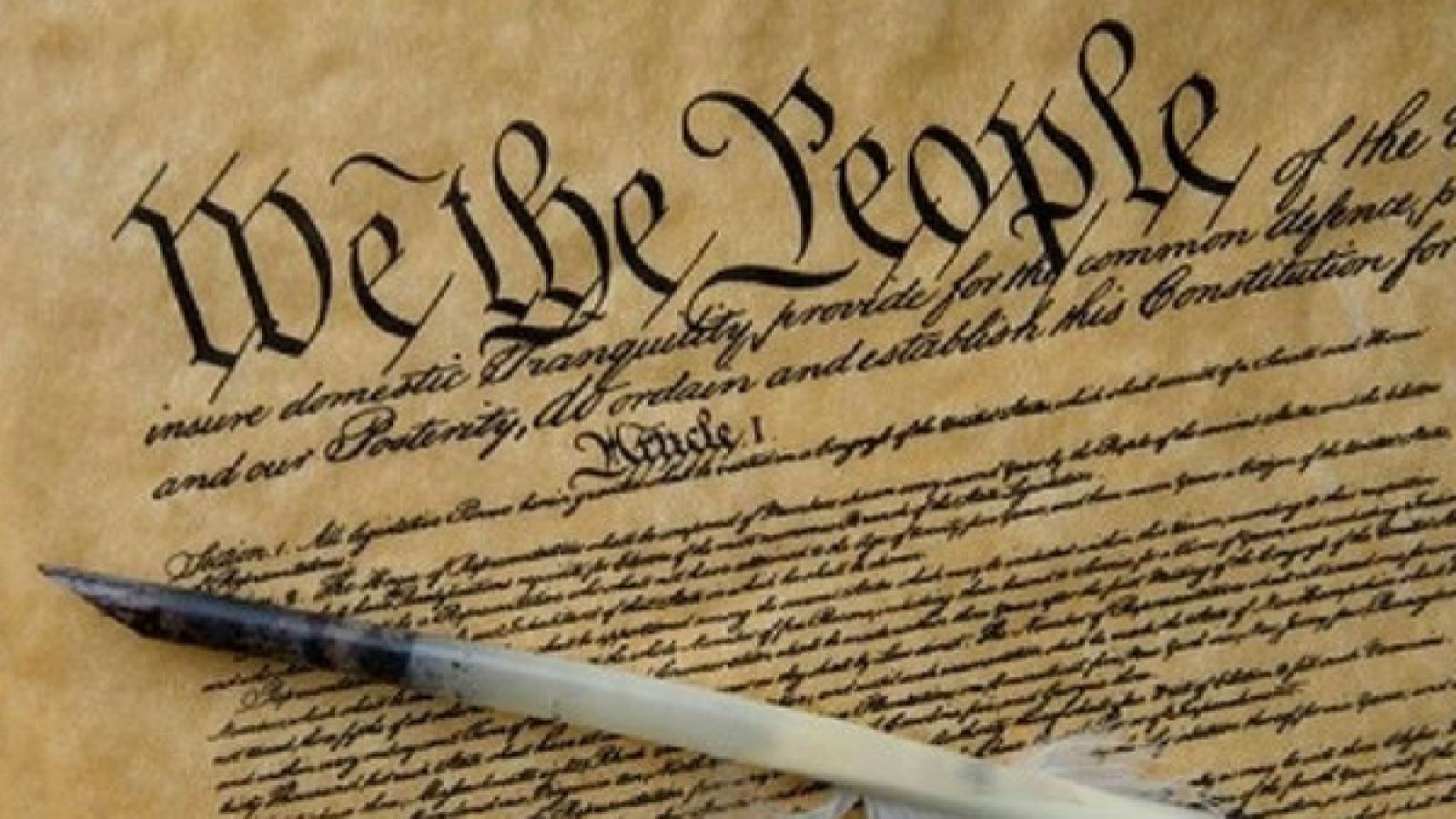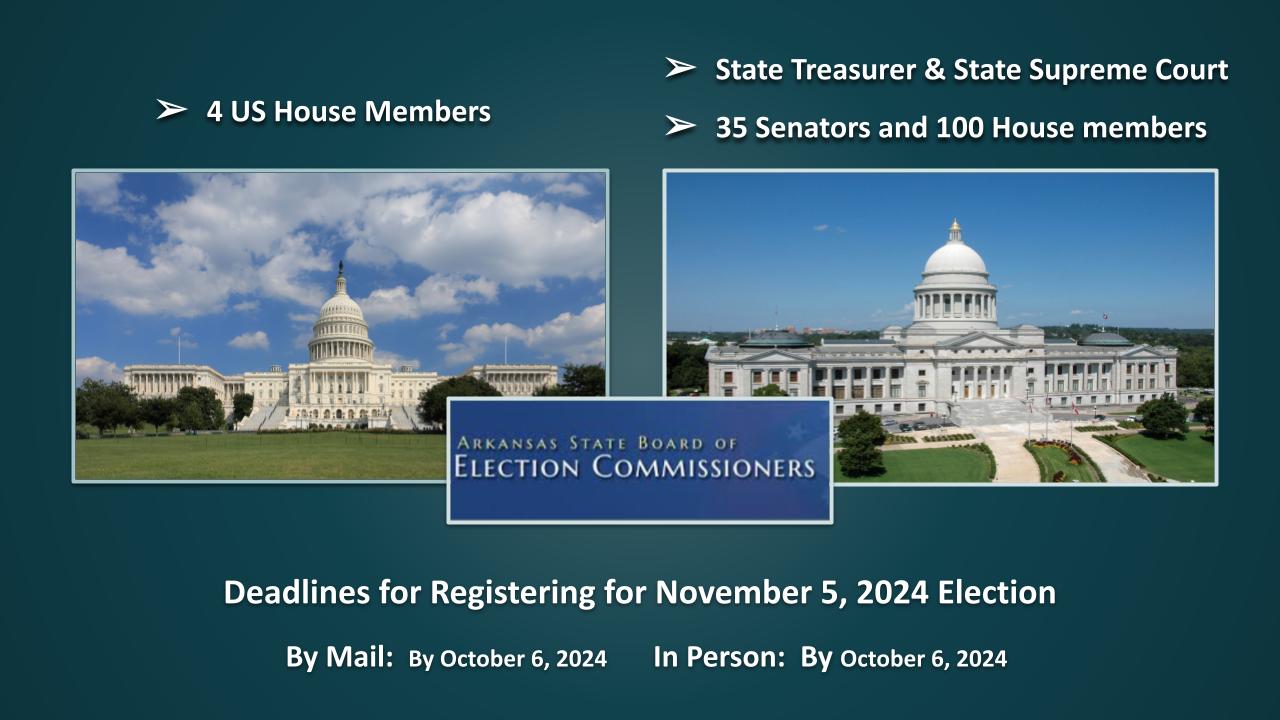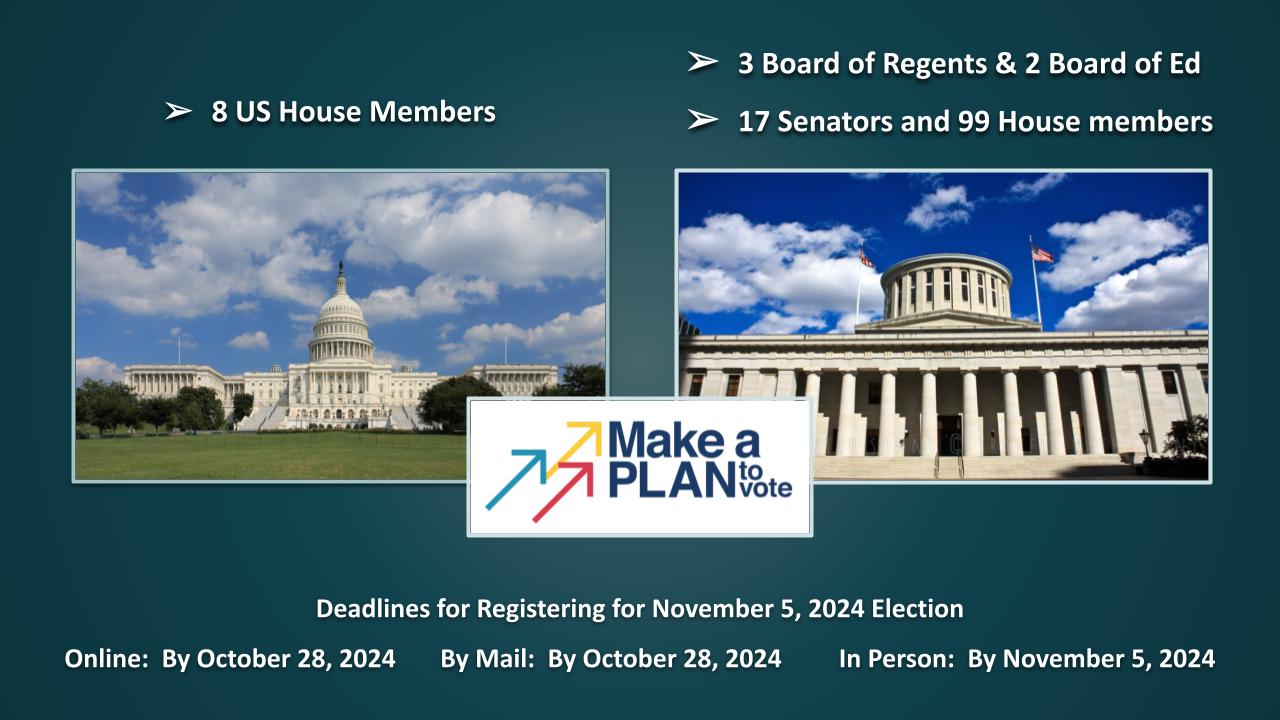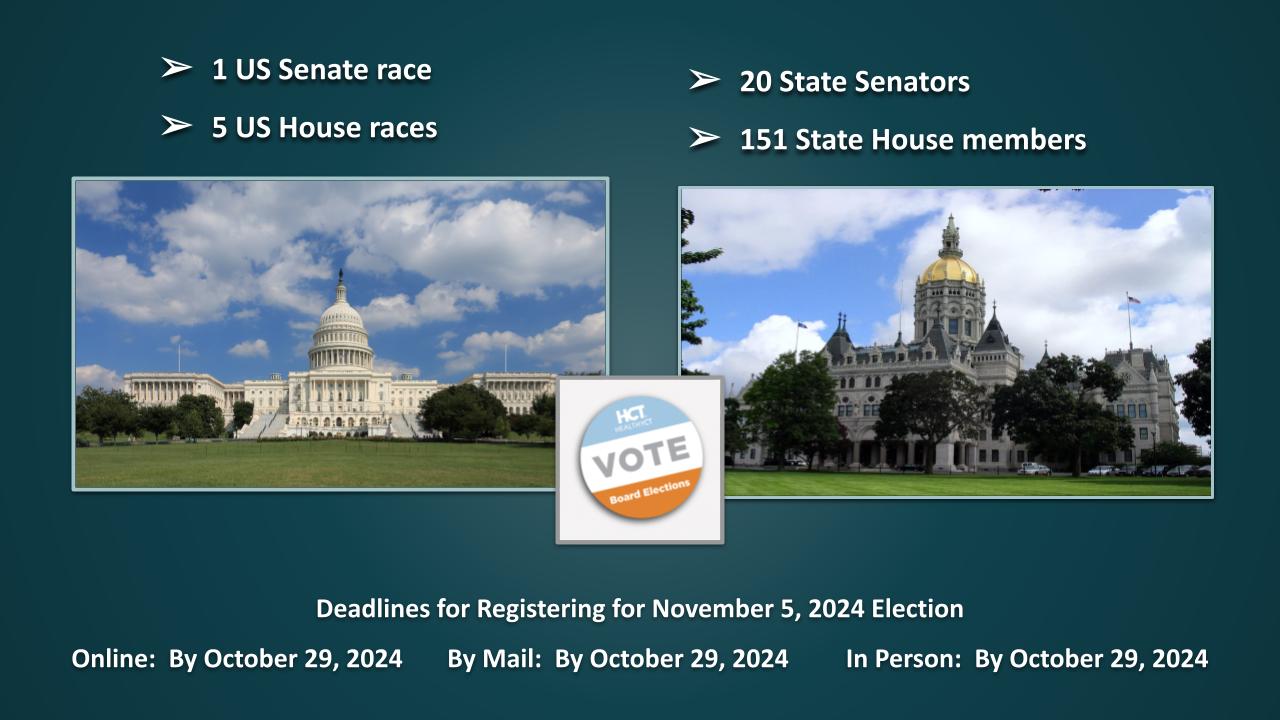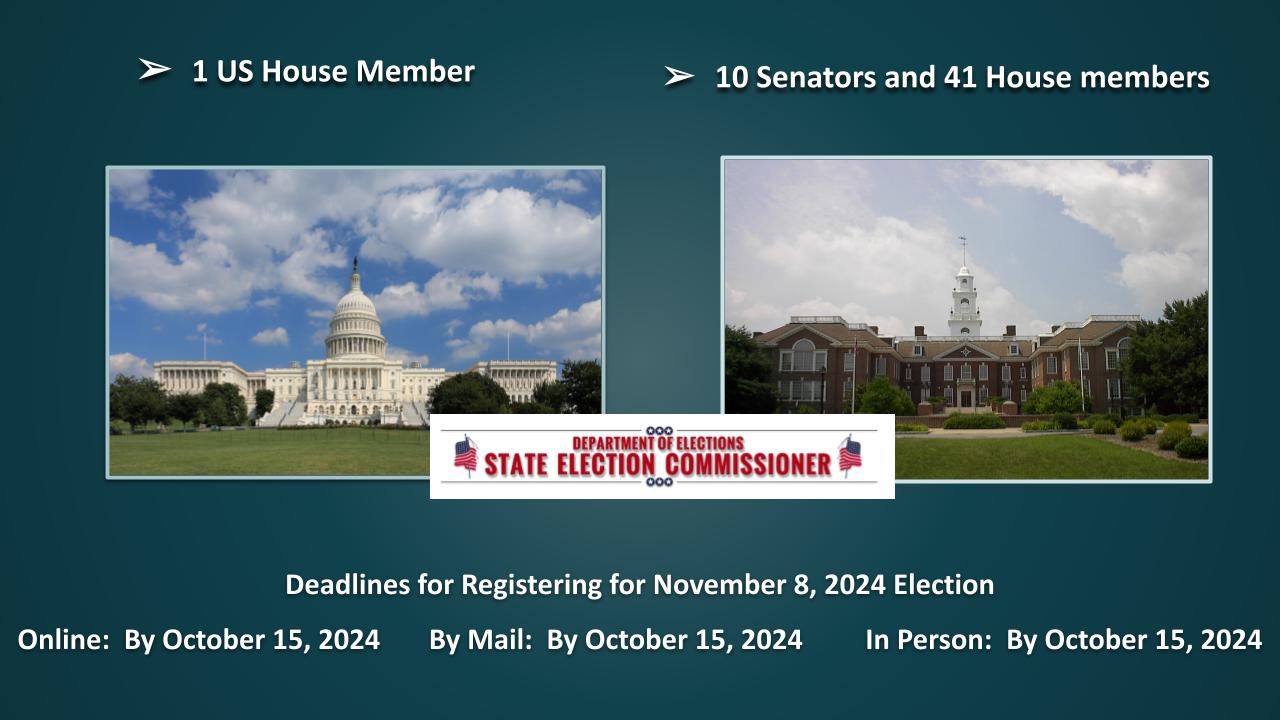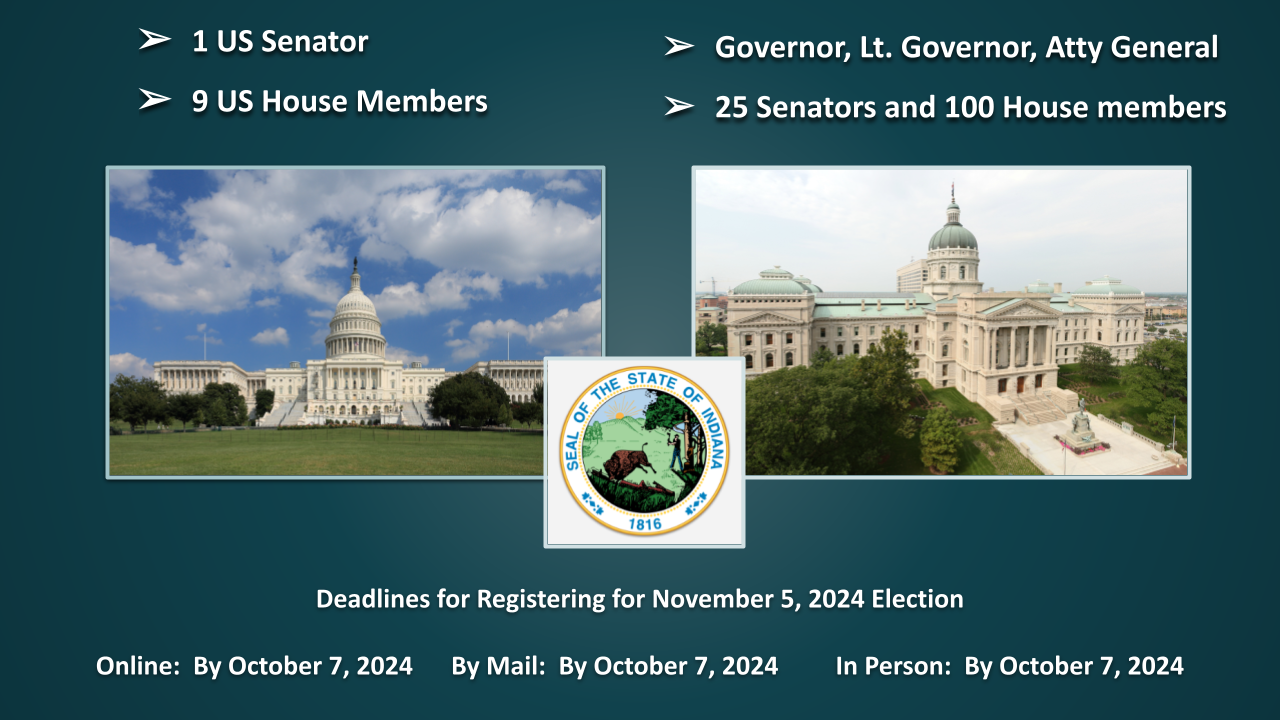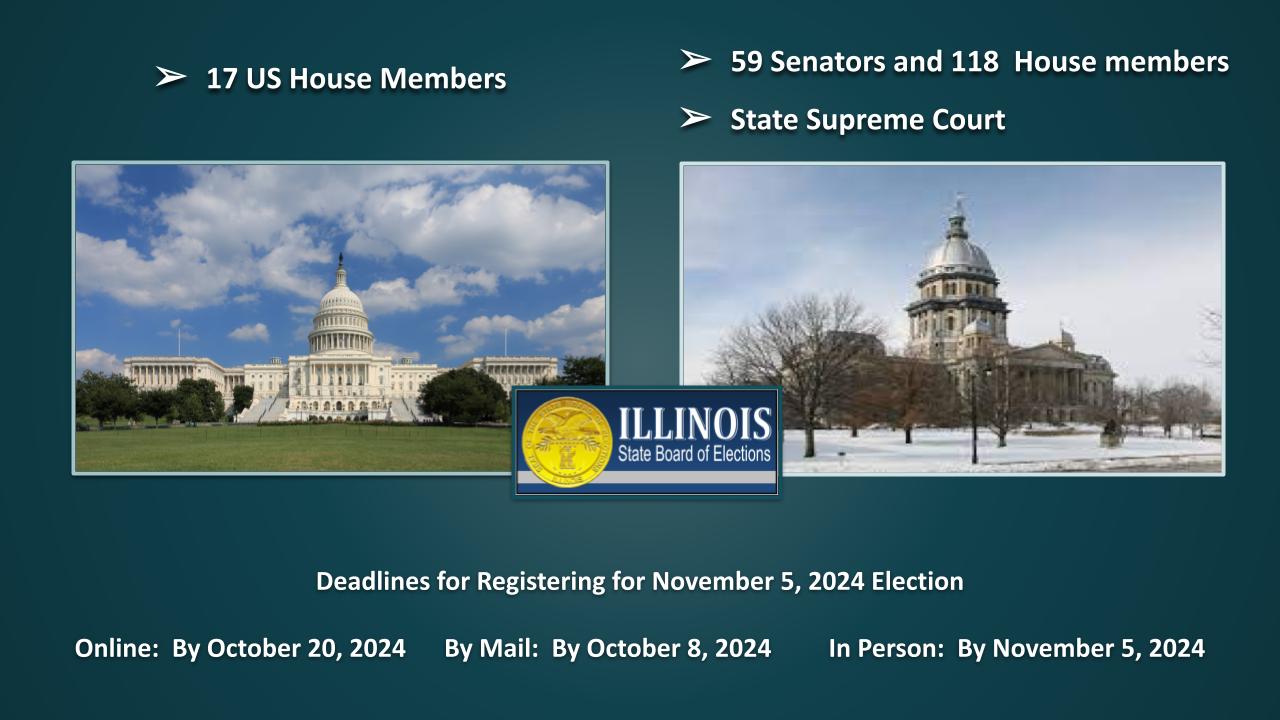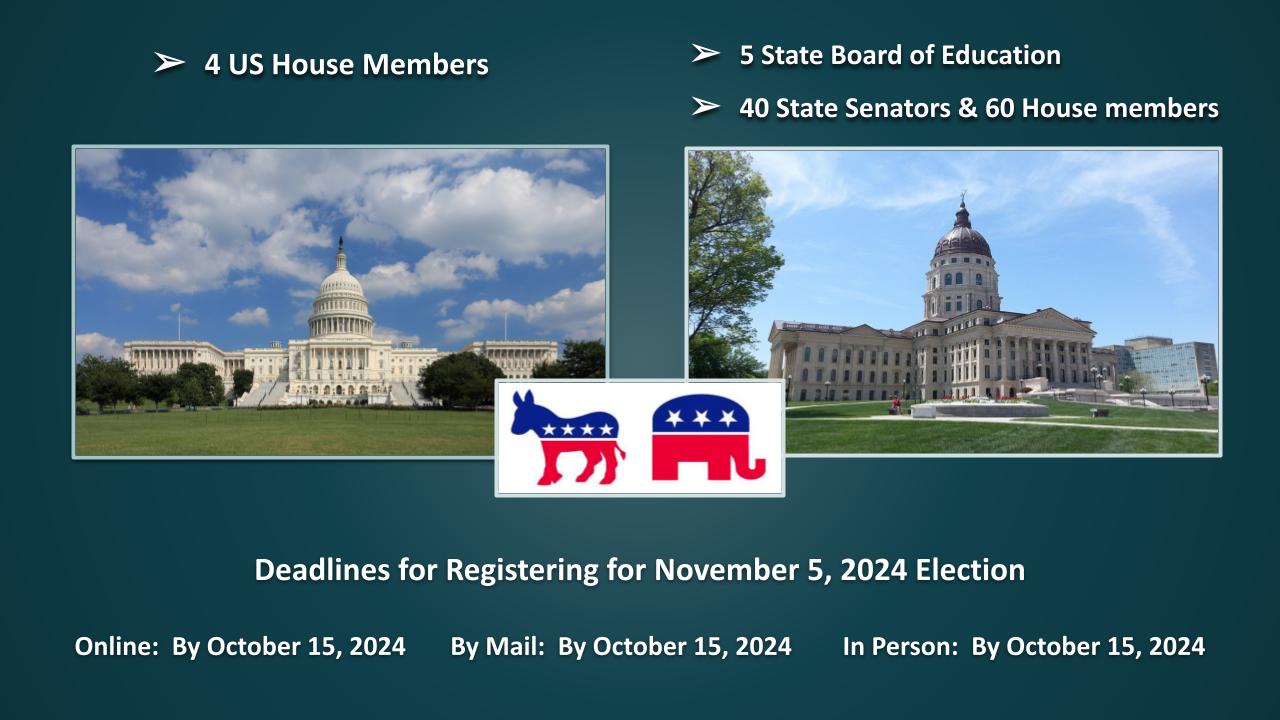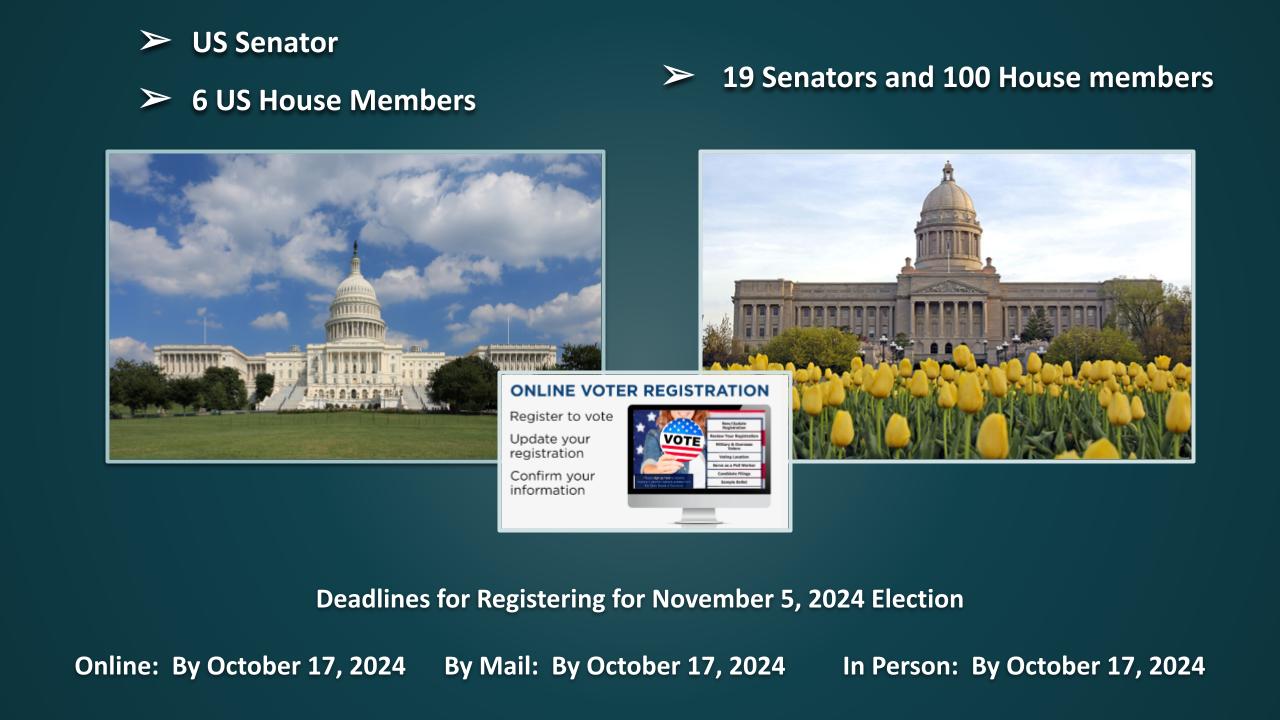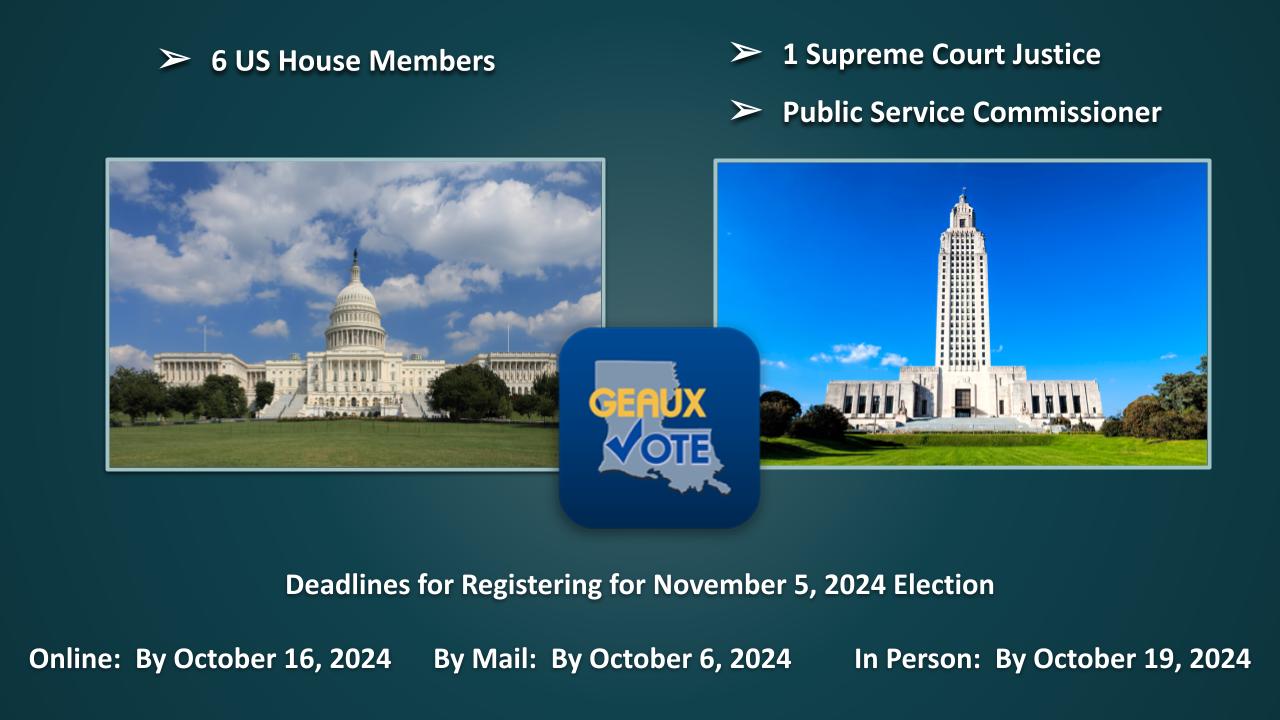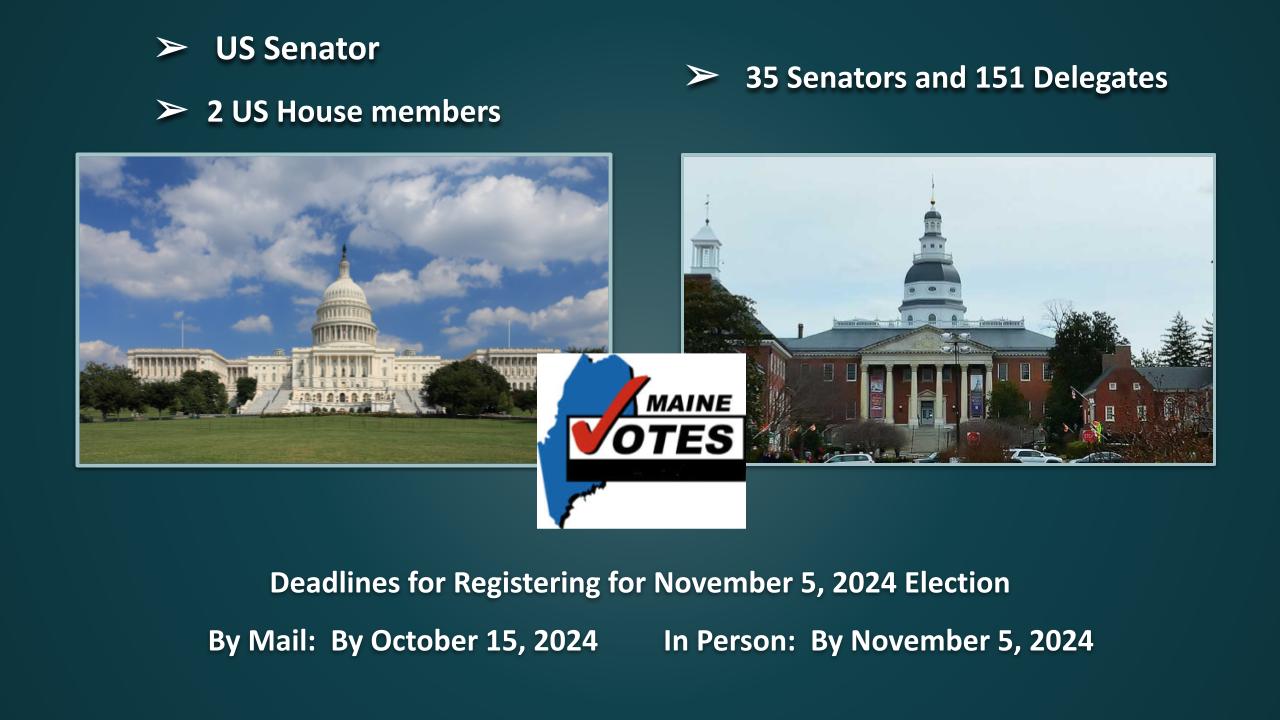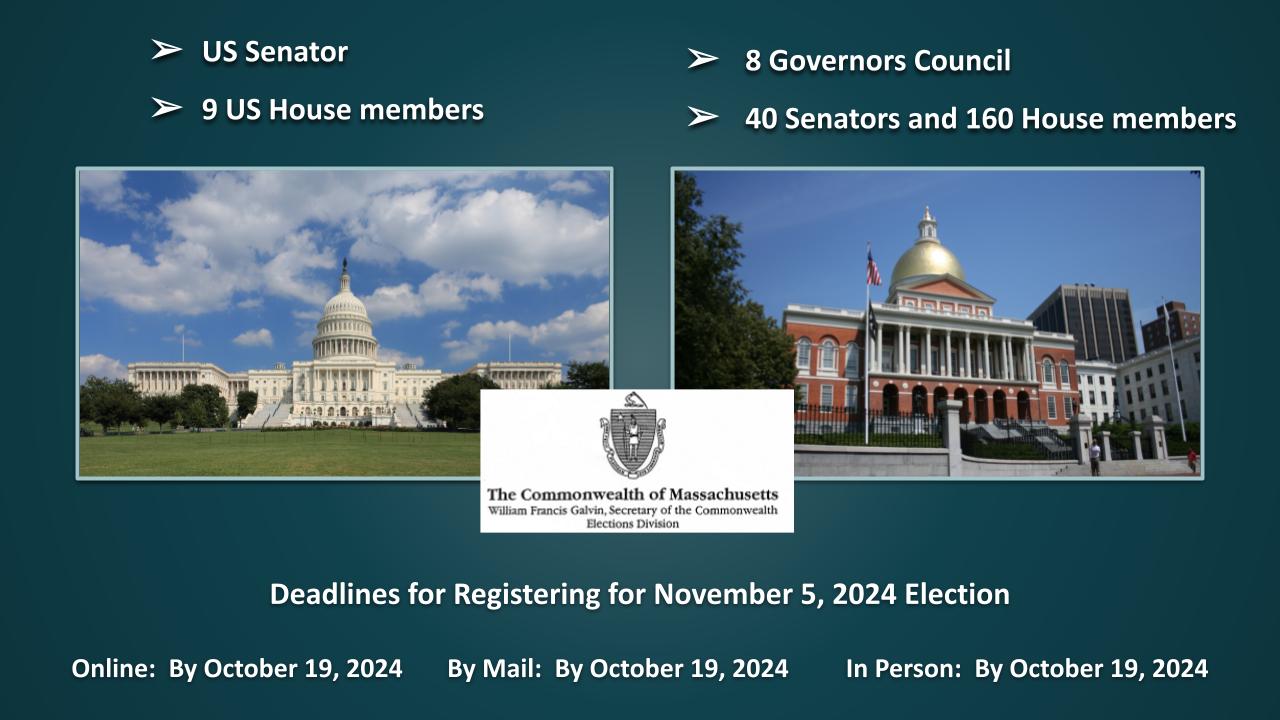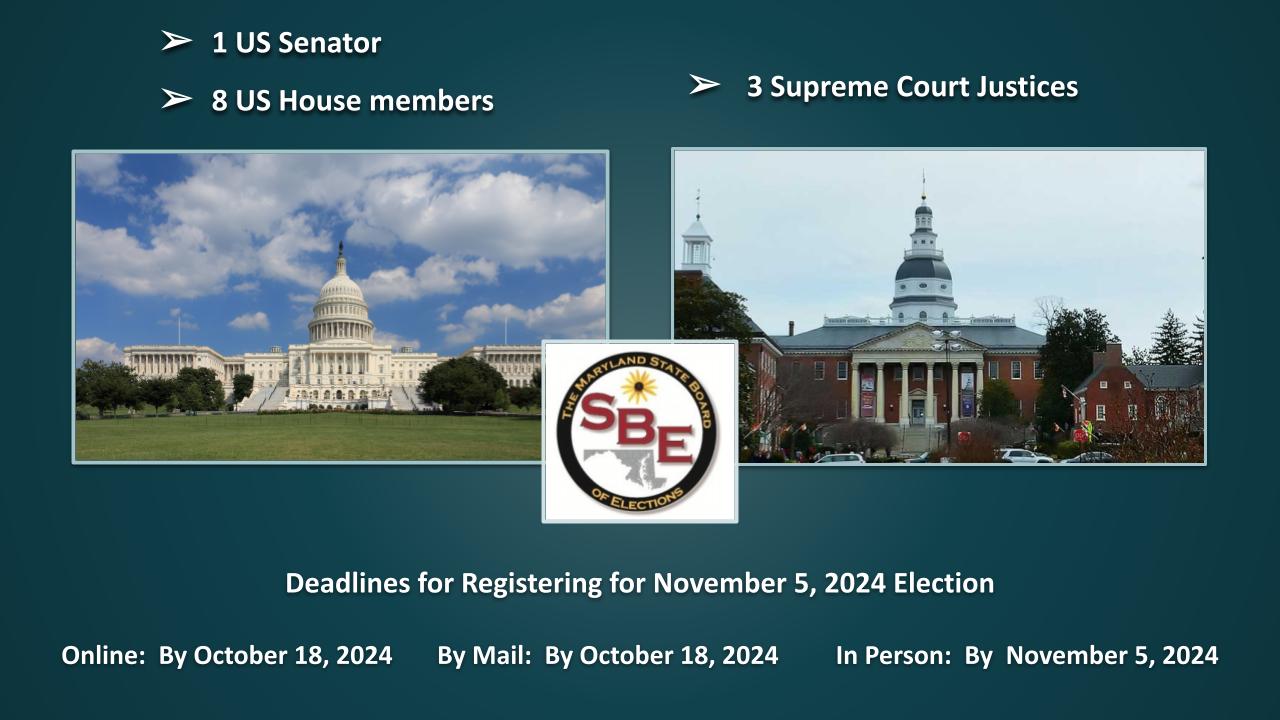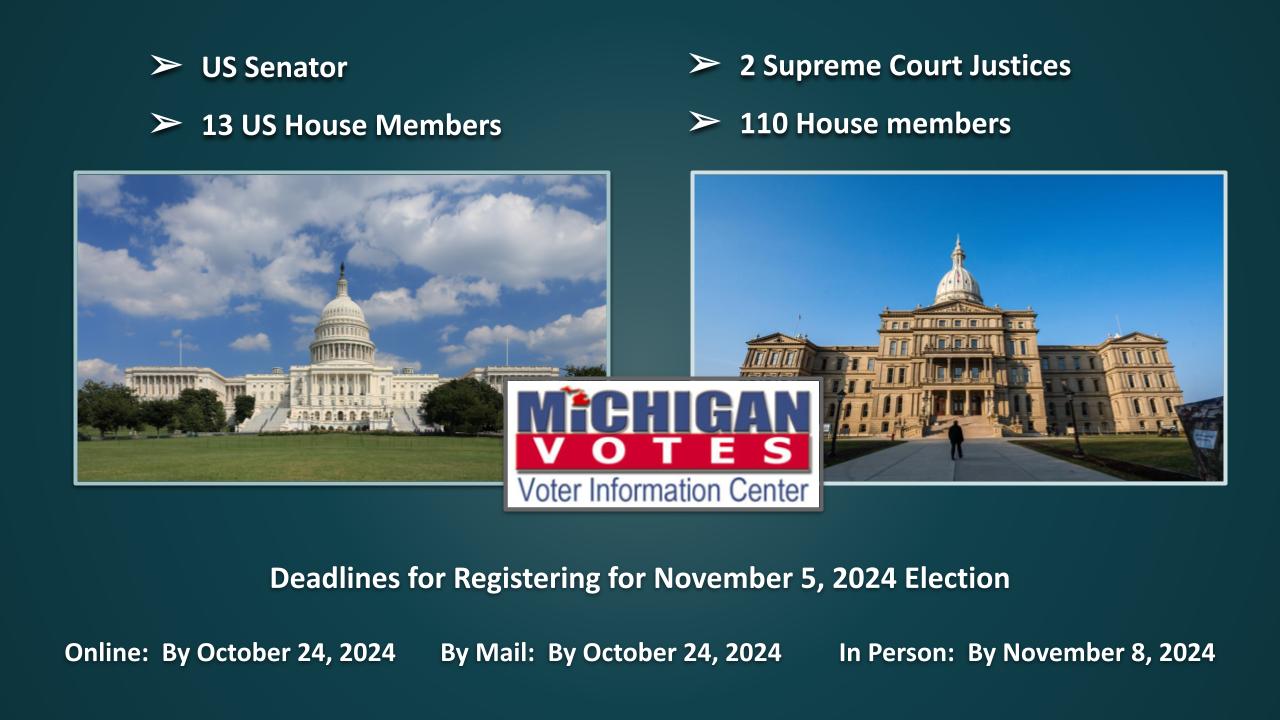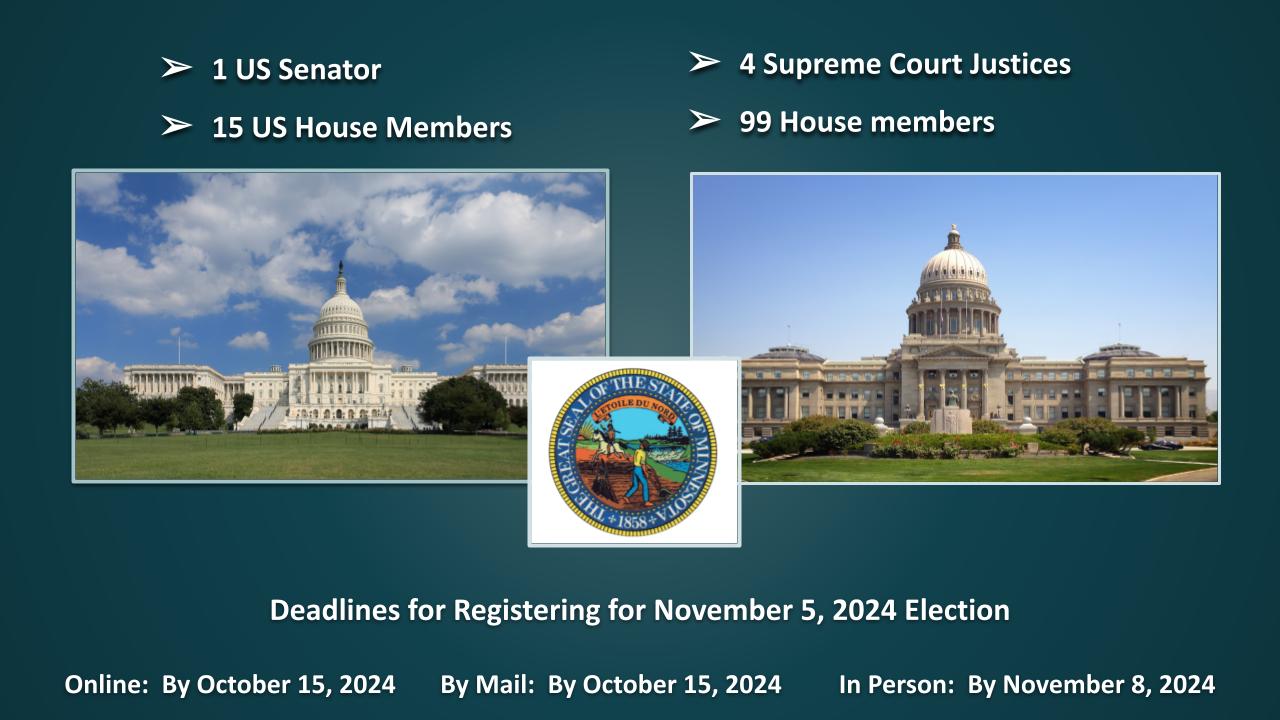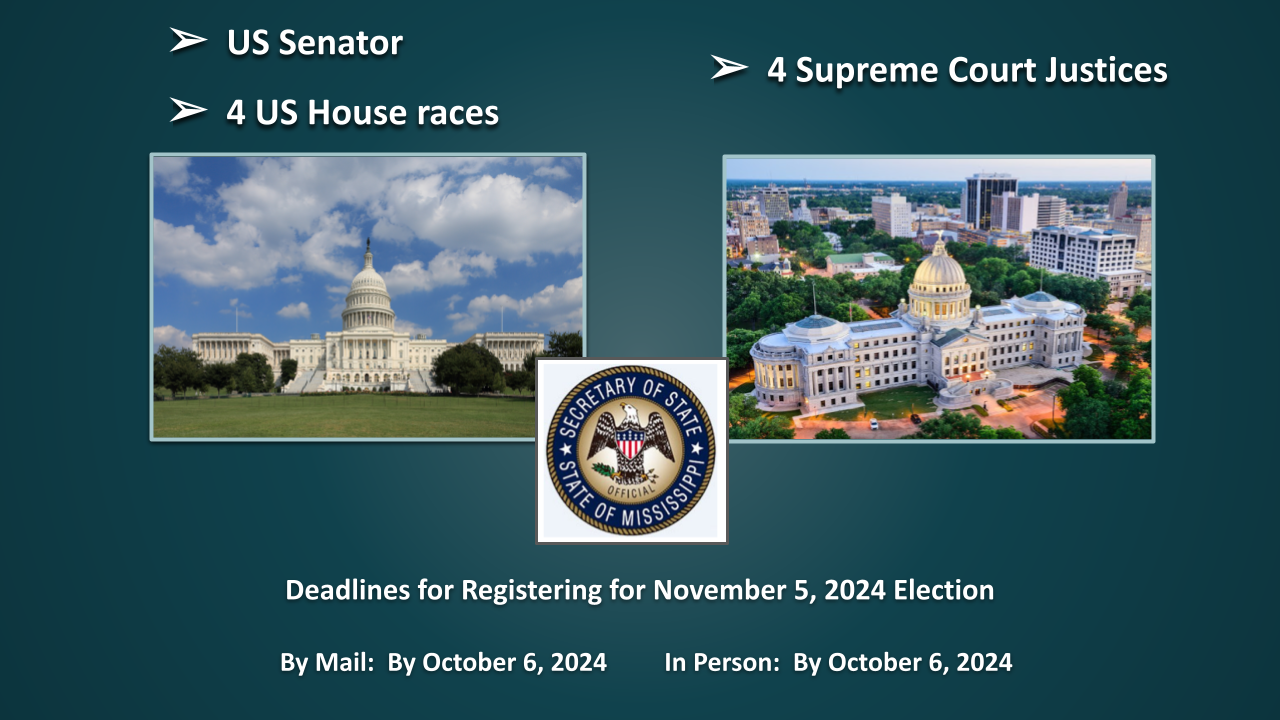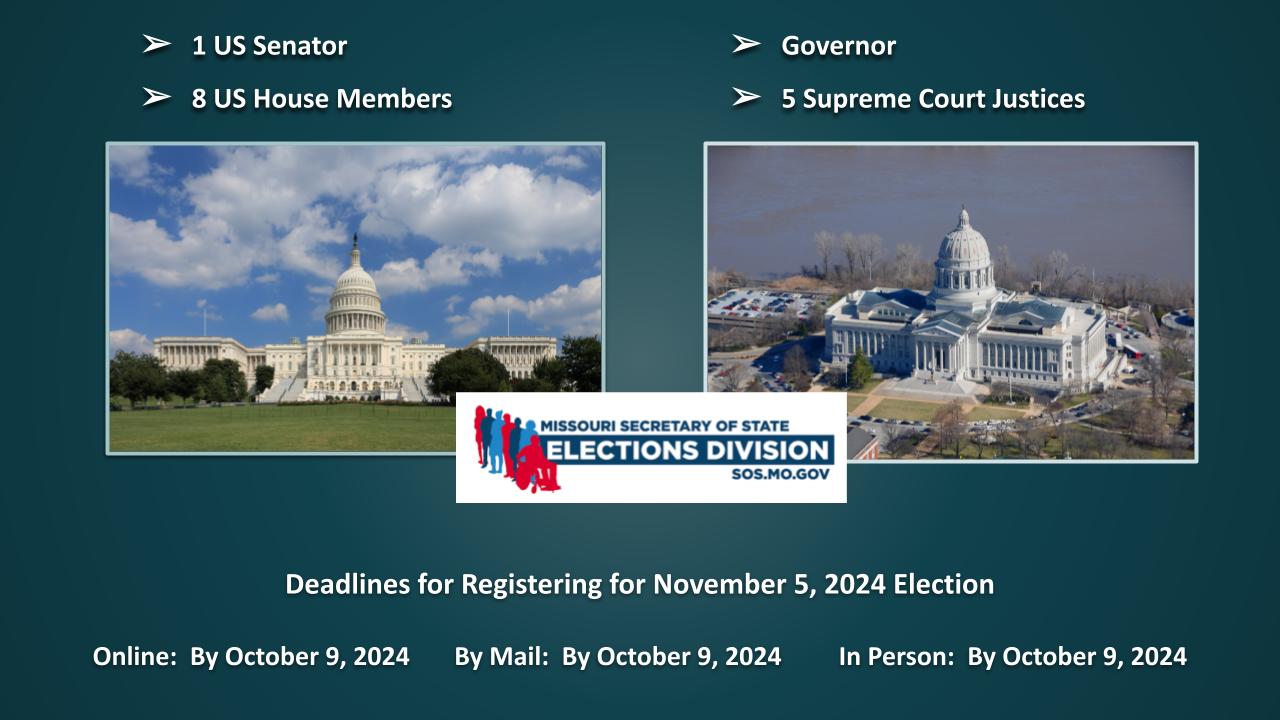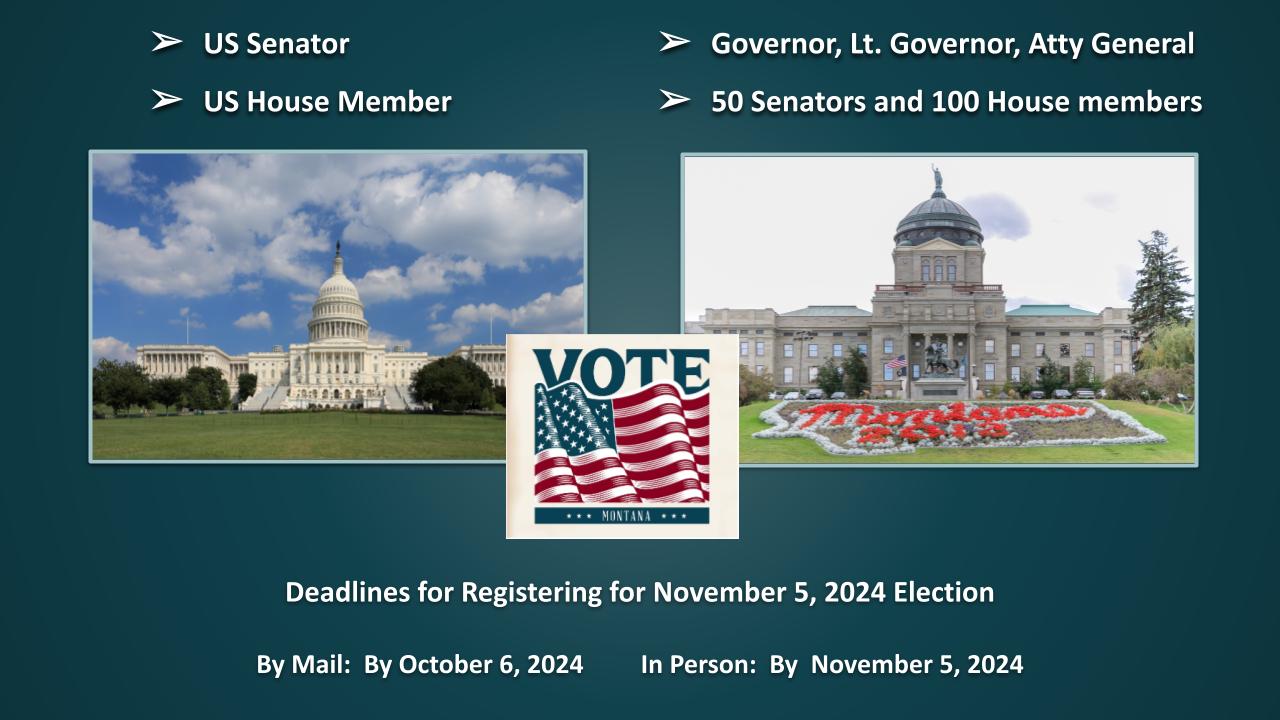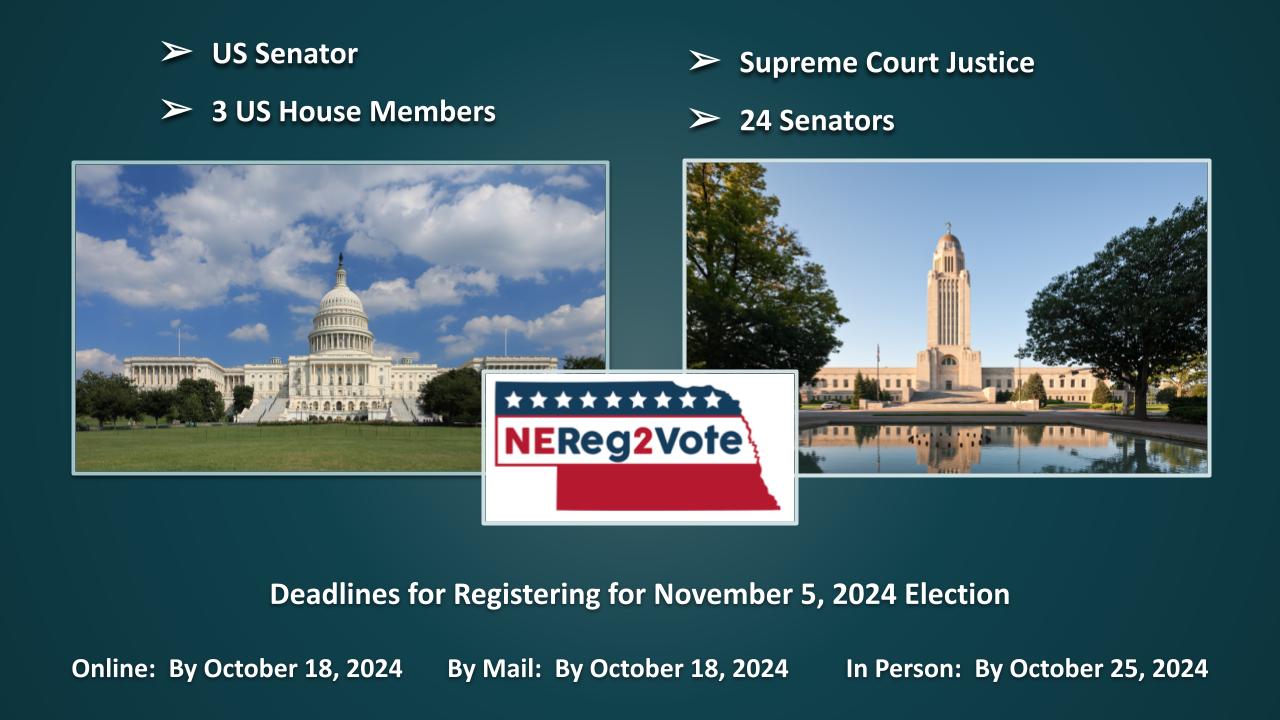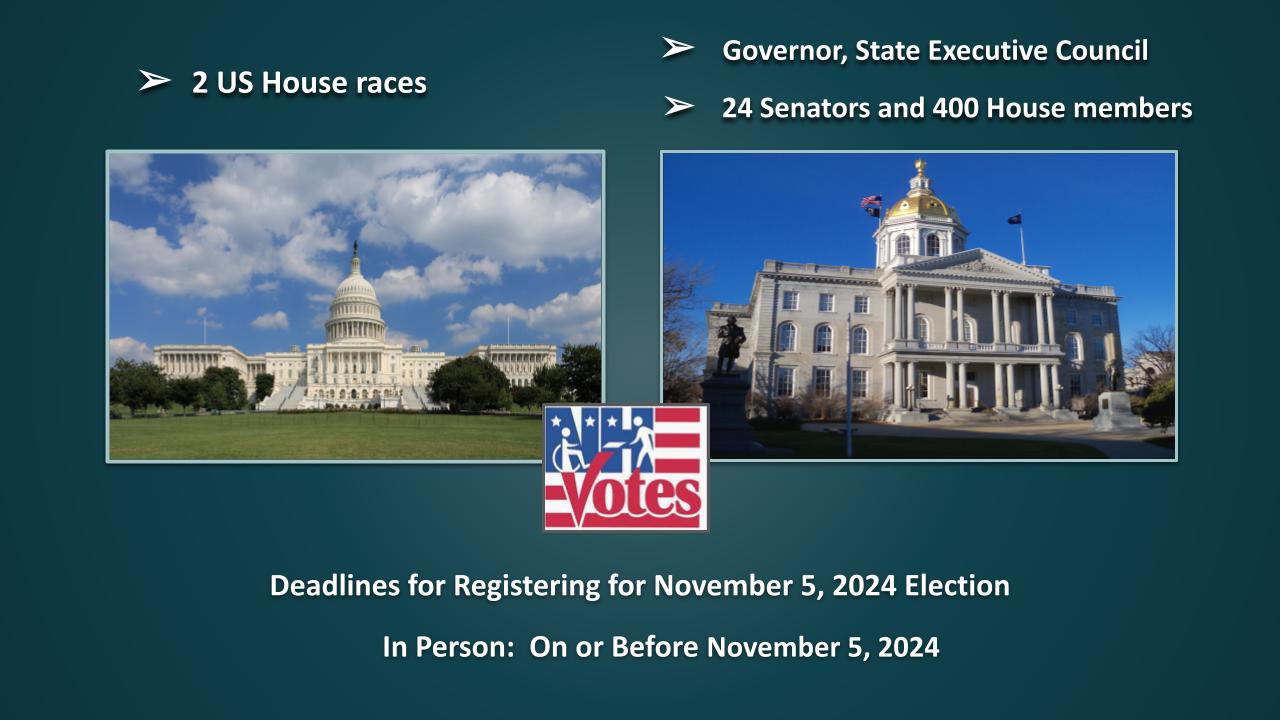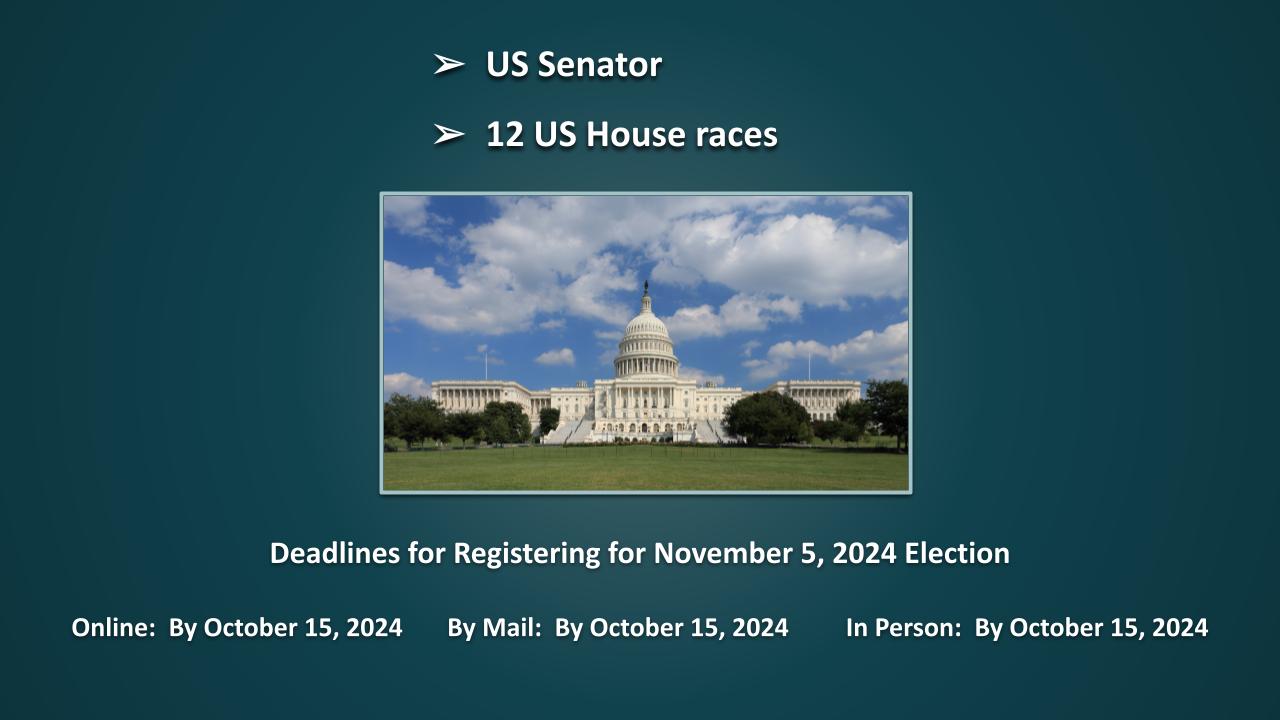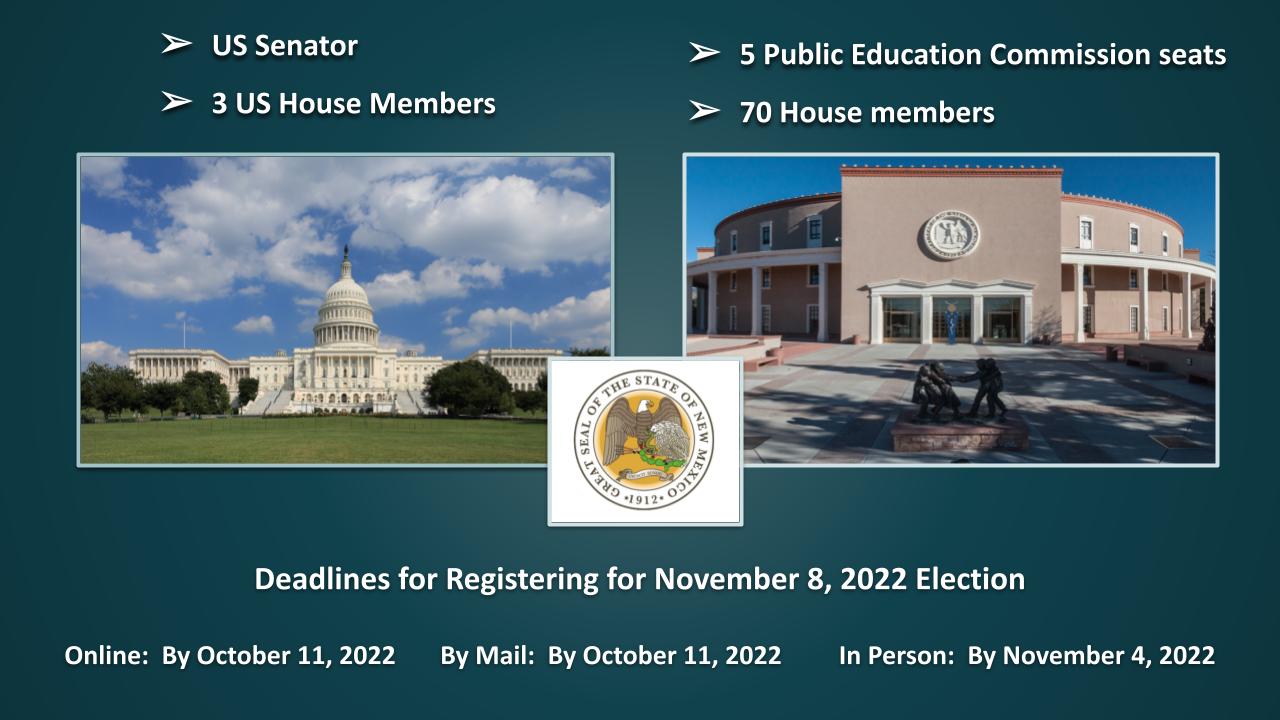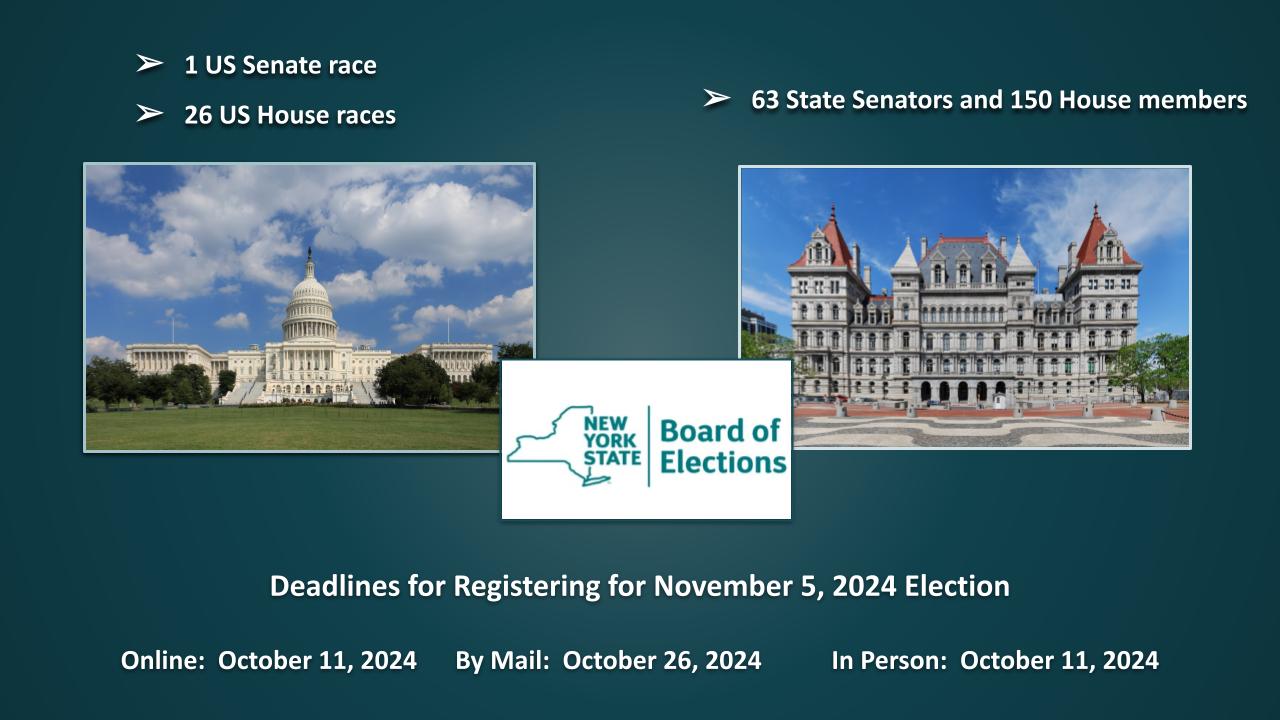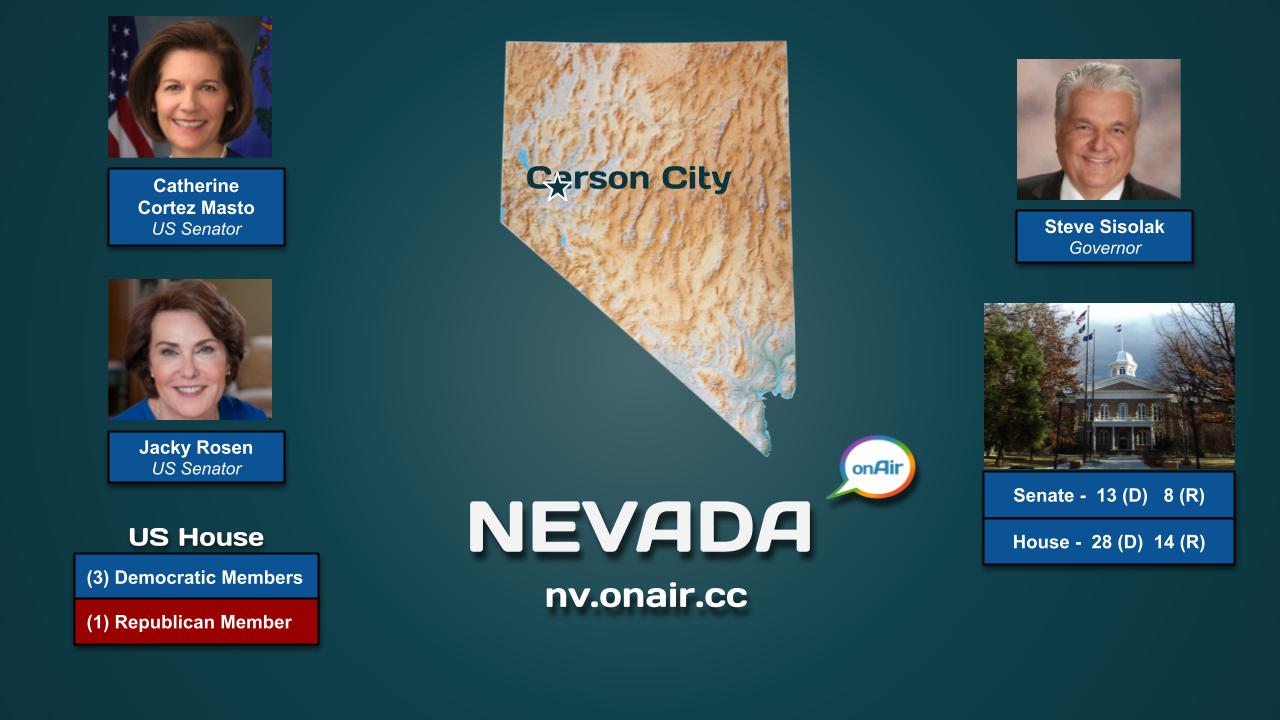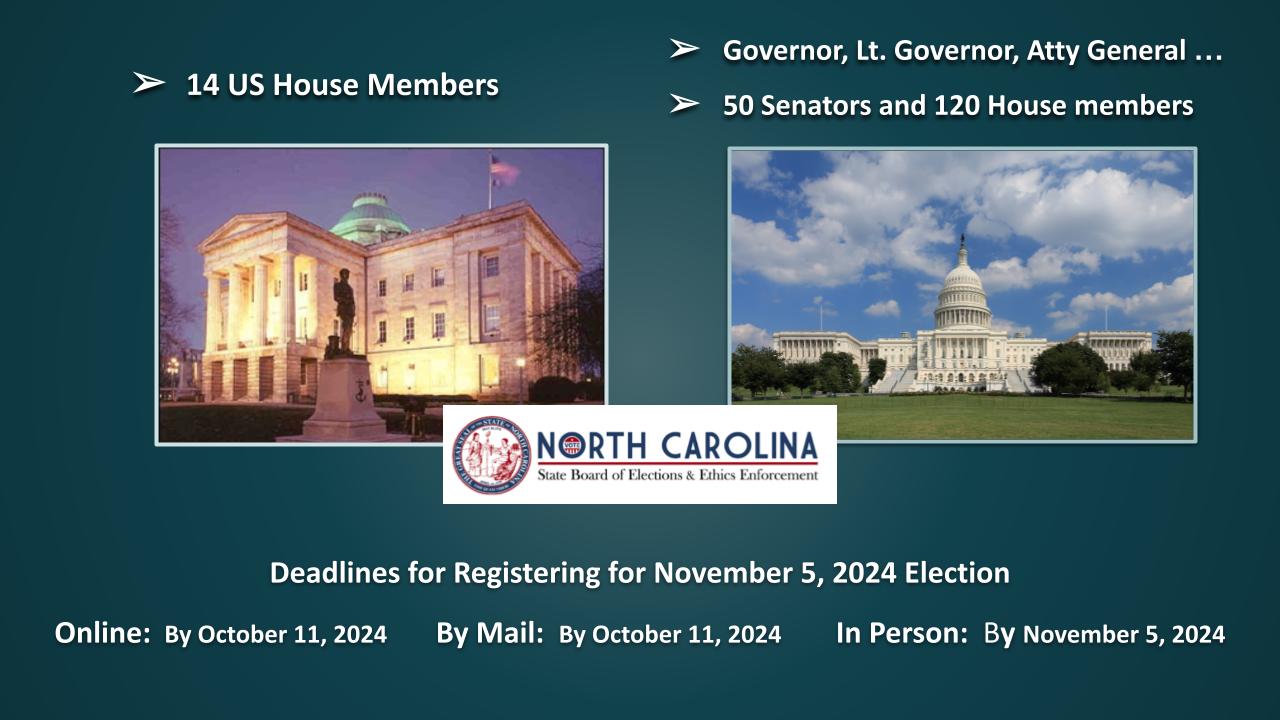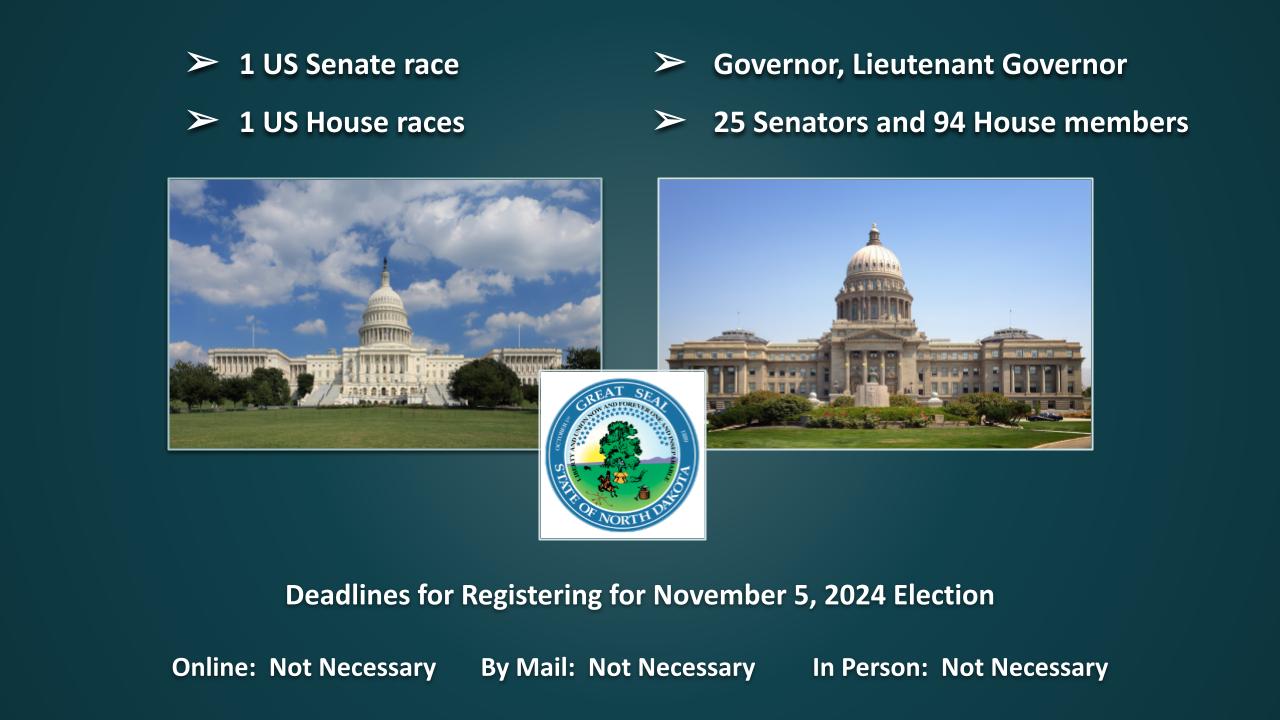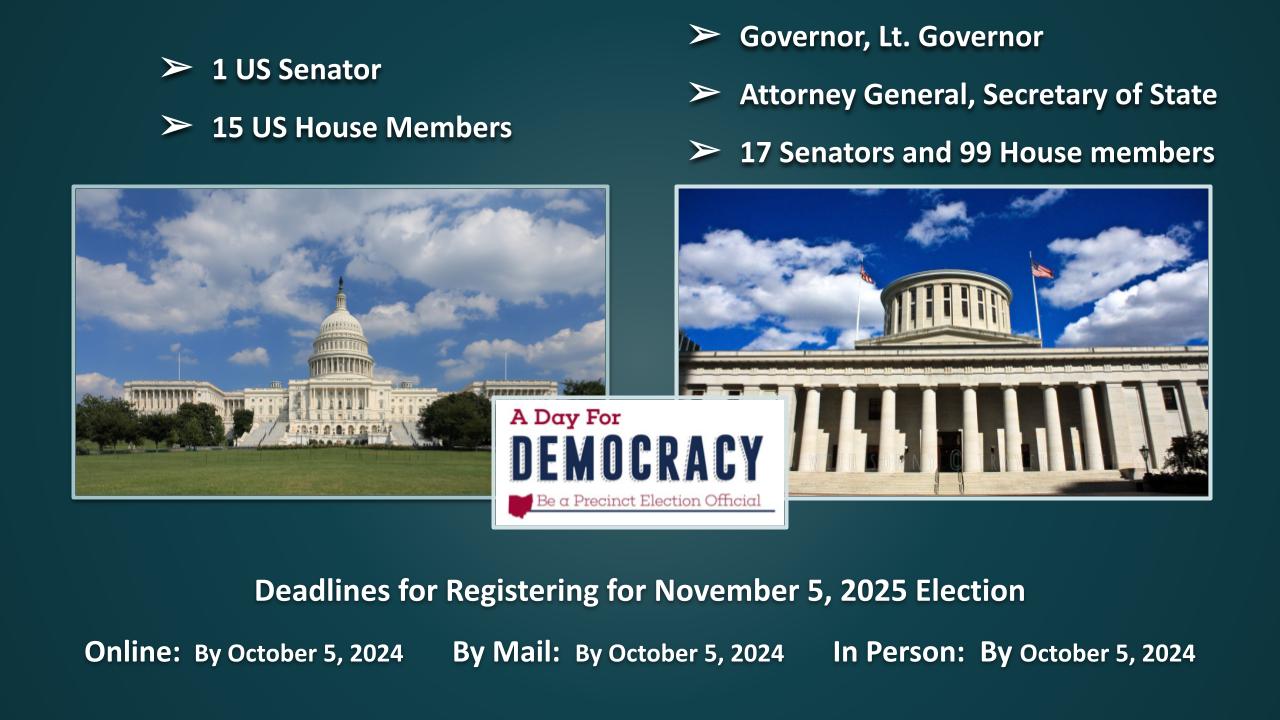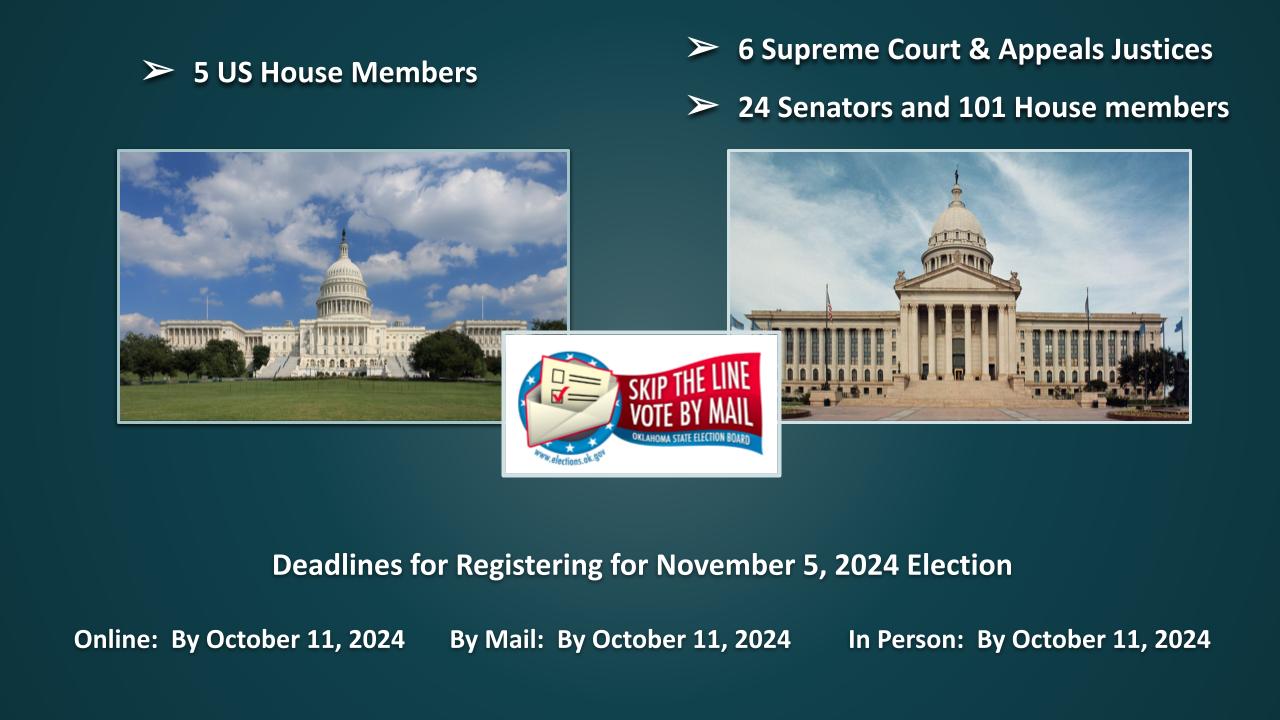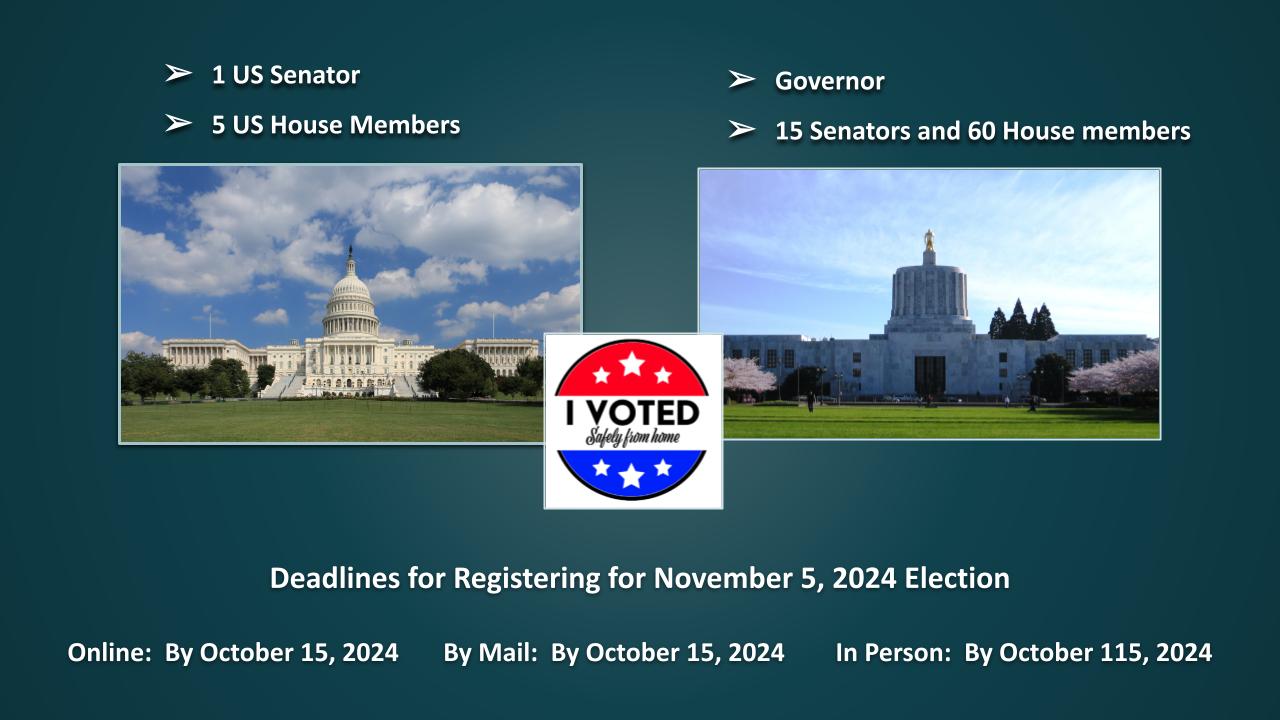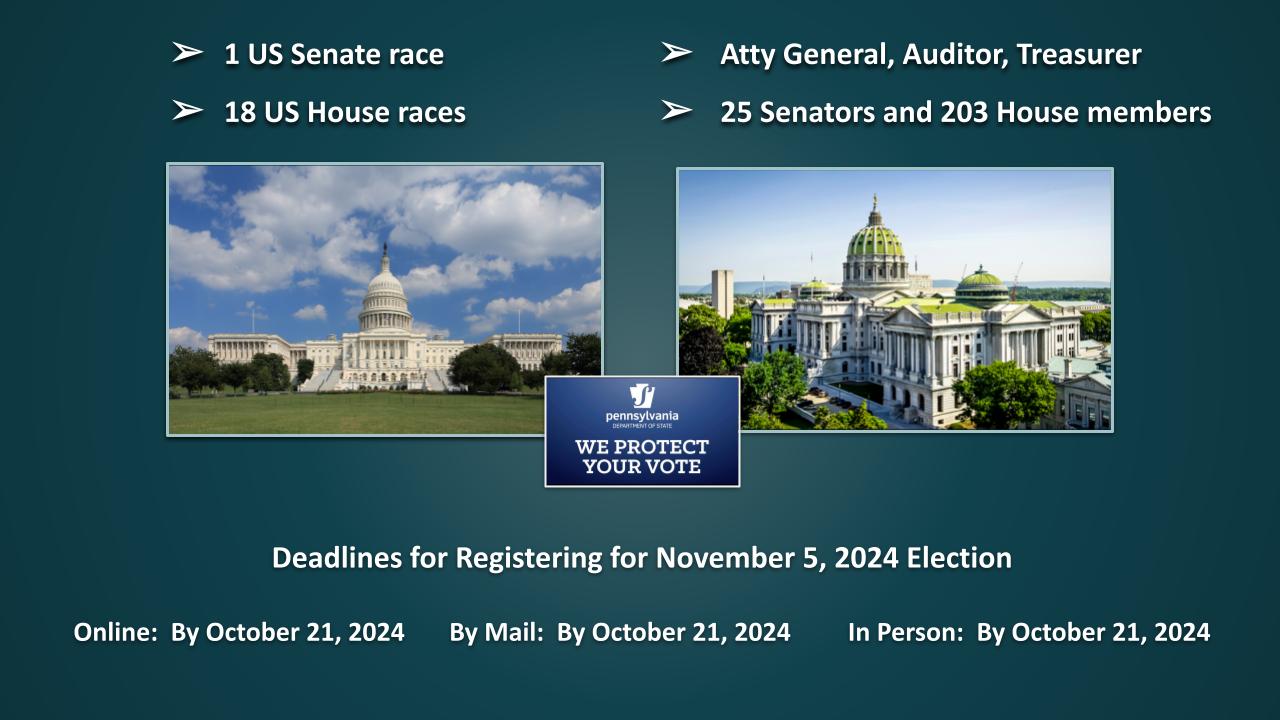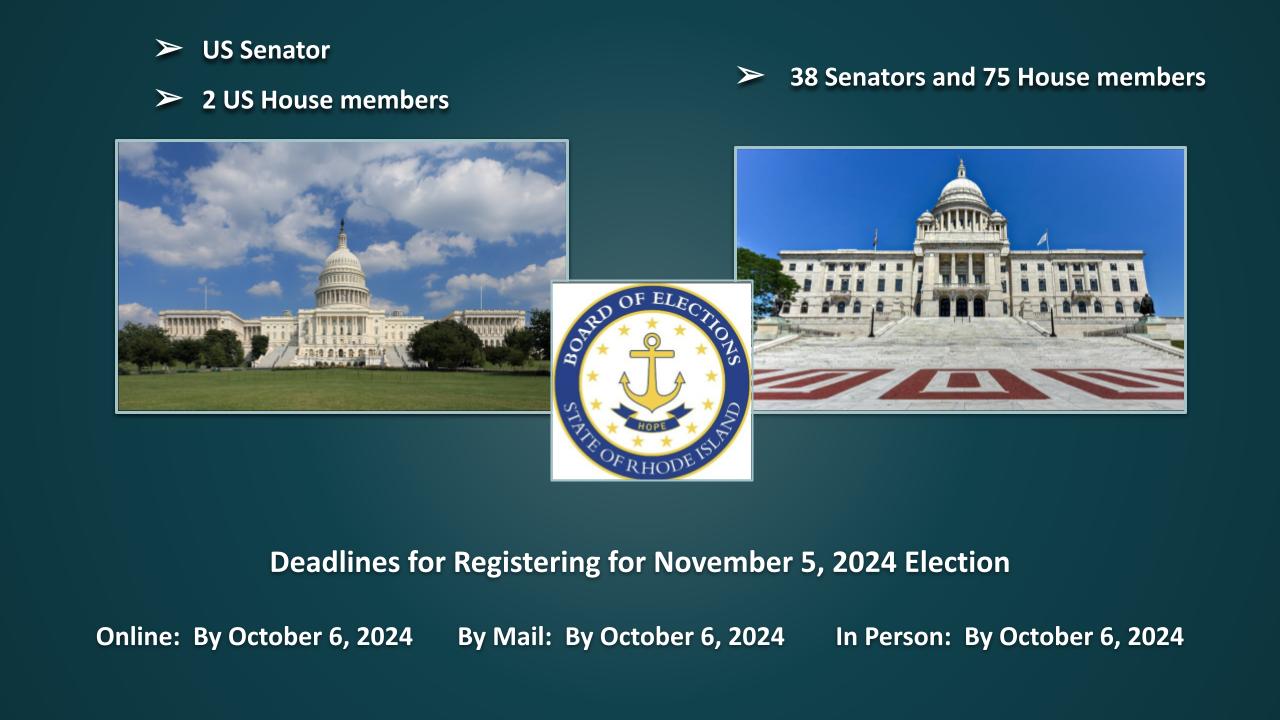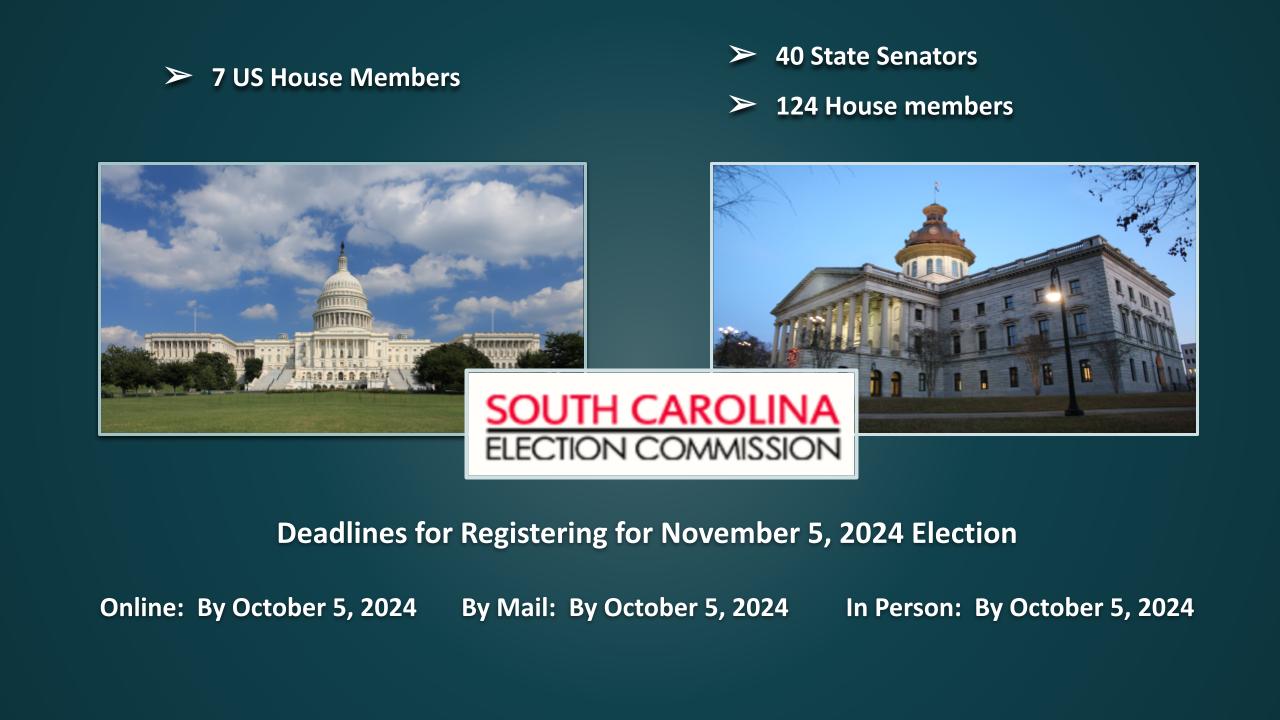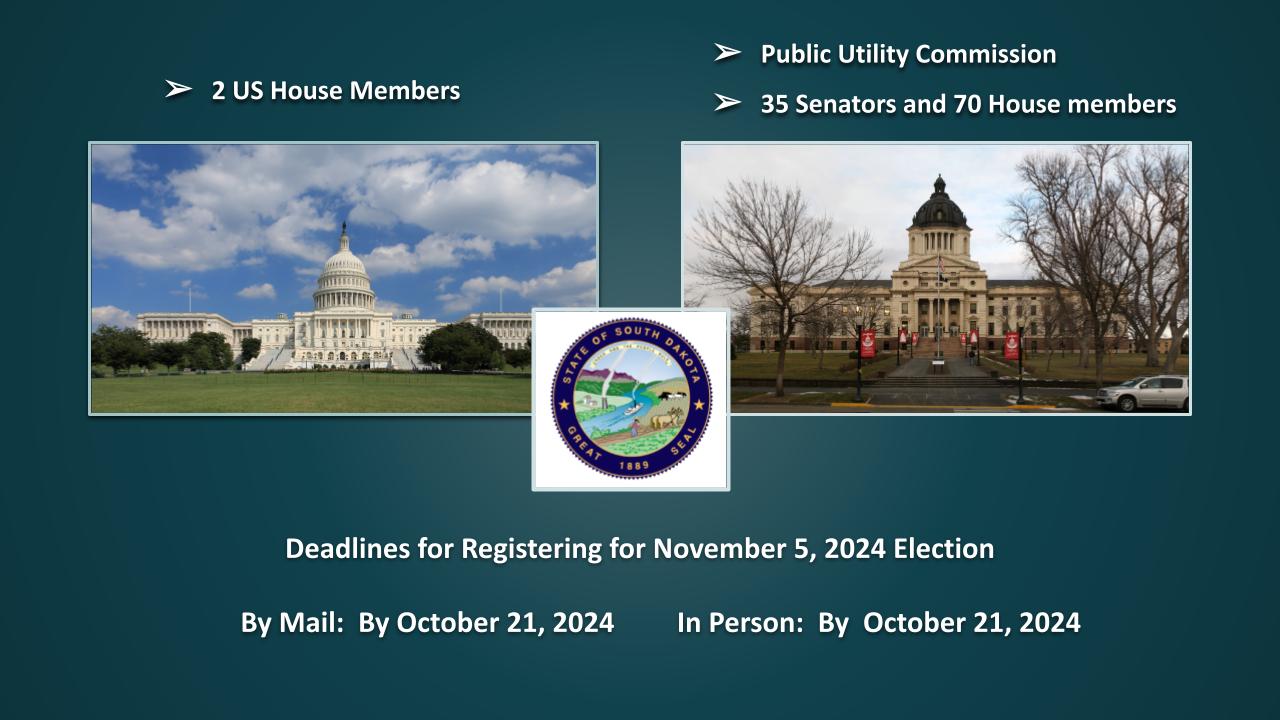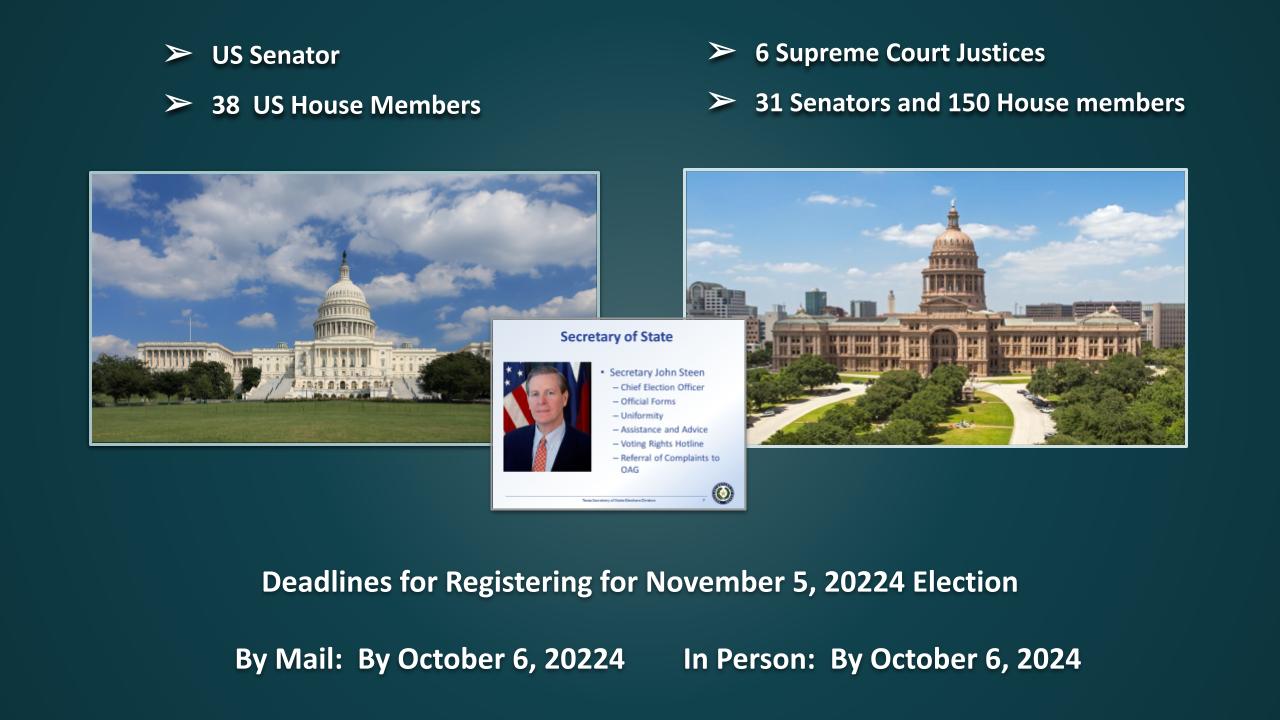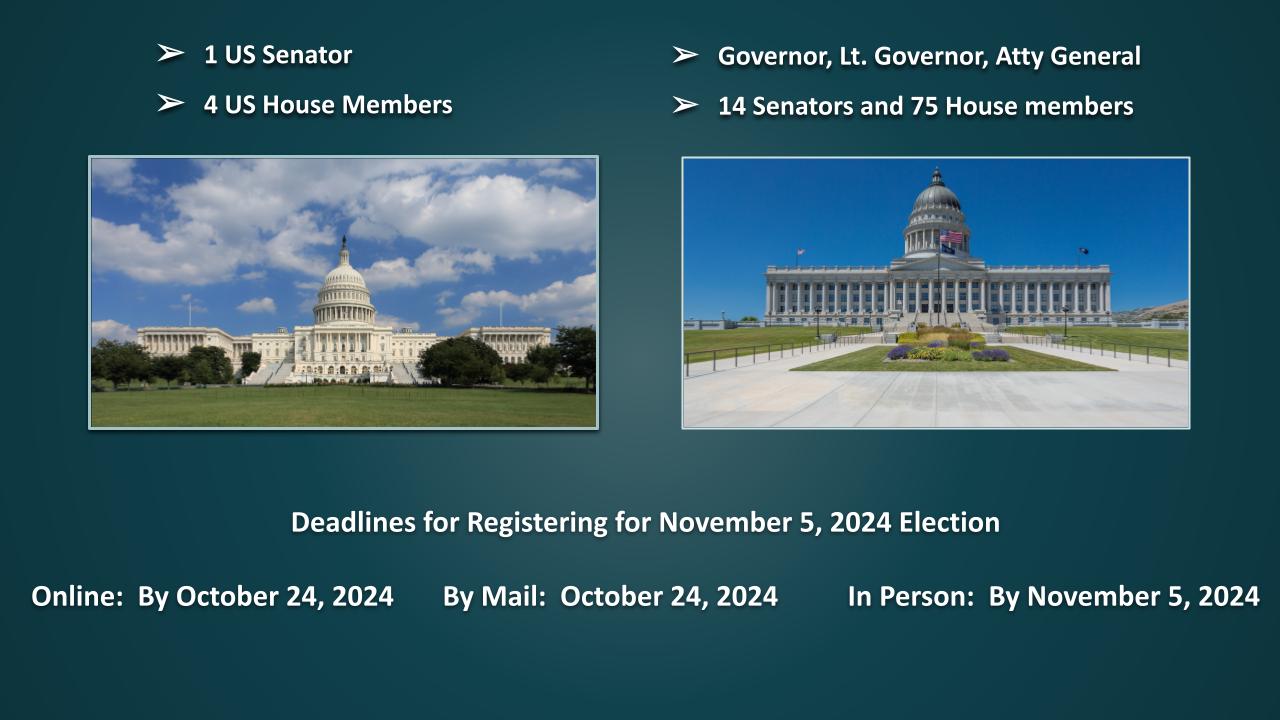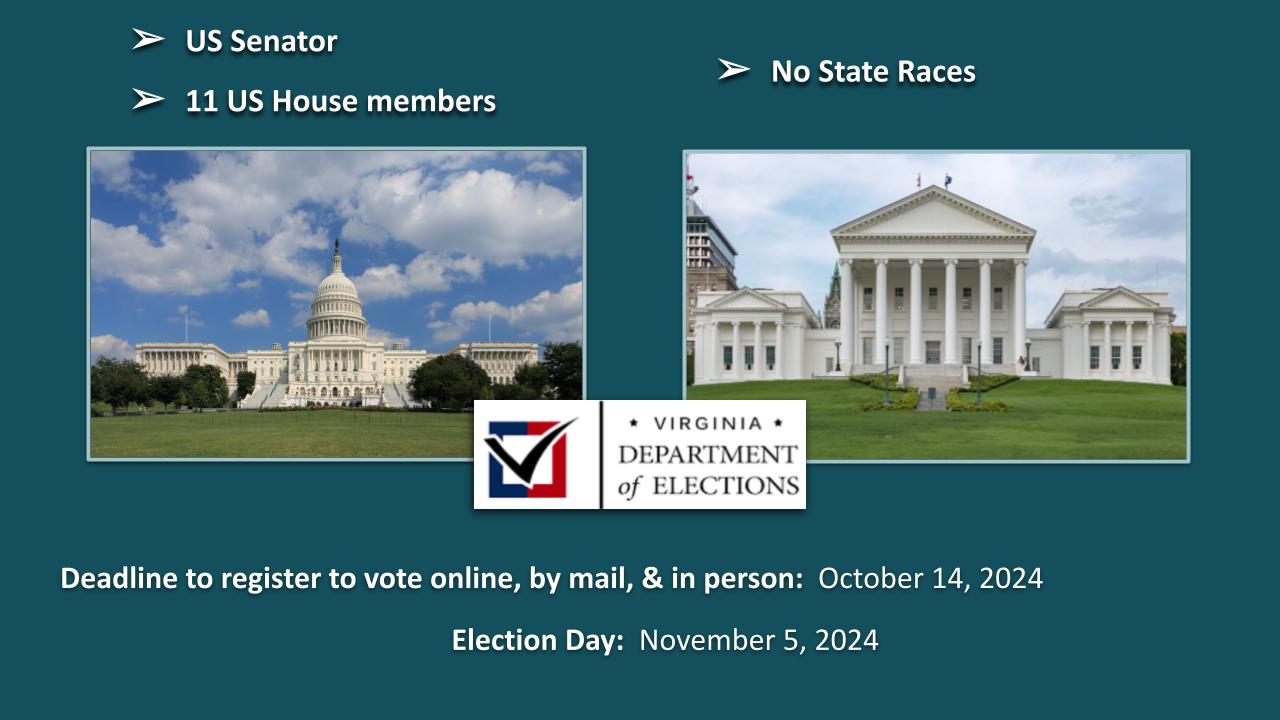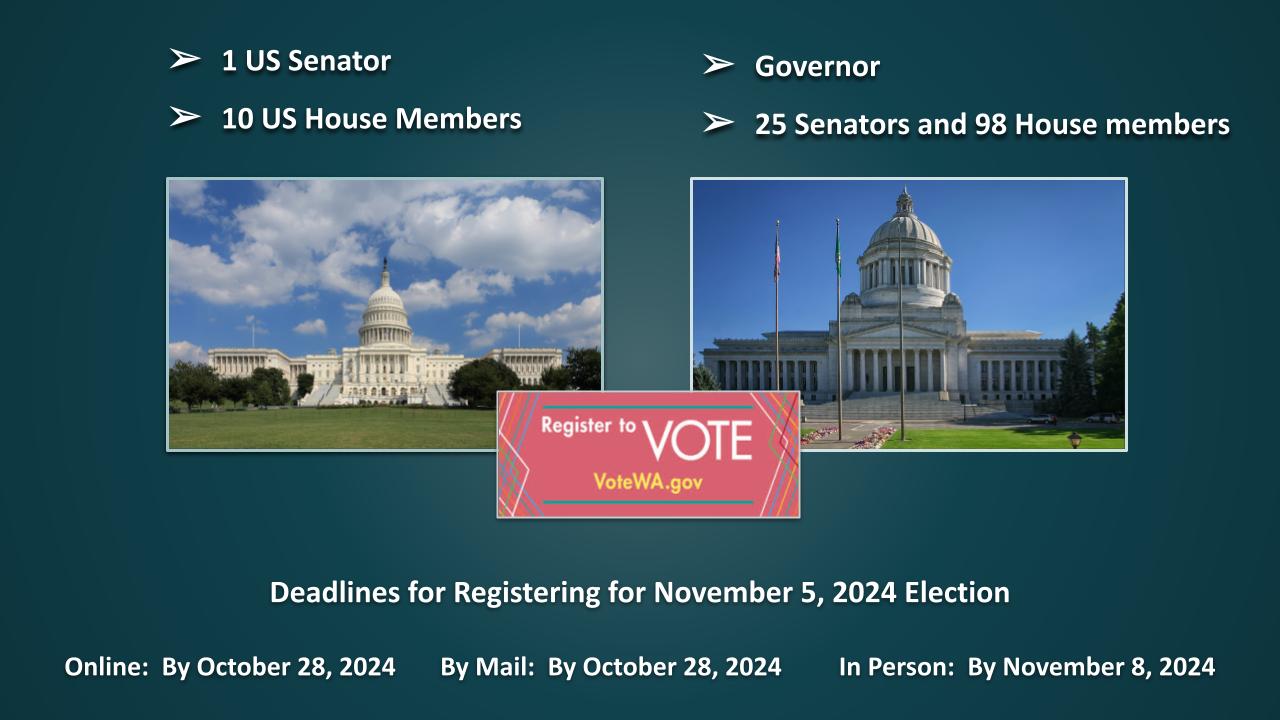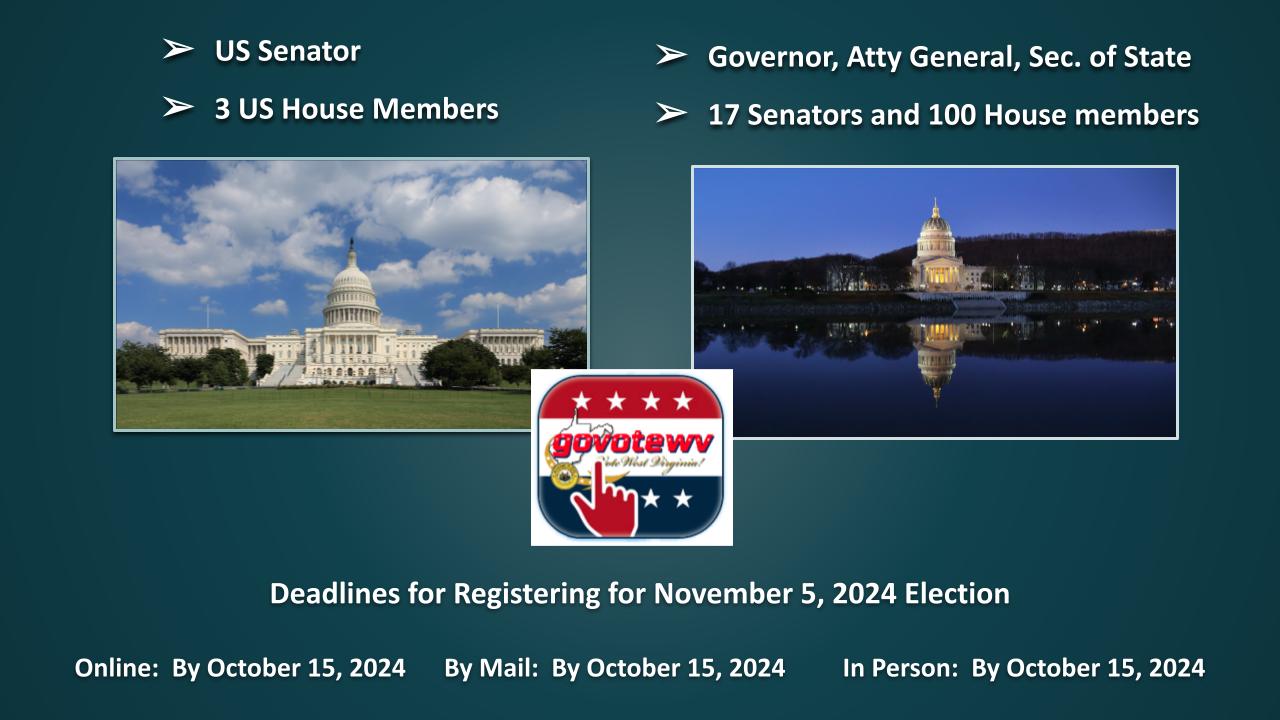Summary
The 2024 United States elections are scheduled to be held on Tuesday, November 5, 2024. During this presidential election year, the President and Vice President will be elected. In addition, all 435 seats in the United States House of Representatives and 34 of the 100 seats in the United States Senate will be contested to determine the membership of the 119th United States Congress. Thirteen state and territorial governorships and numerous other state and local elections will also be contested.
After Labor Day and after most of the primaries, we will have posts and maps similar to this map.
Source: Wikipedia
OnAir Post: US Elections – 10/5/24
News
There’s a lot at stake with midterms this year. Find out when your state is voting
Major races: SENATE. HOUSE. GOVERNOR. ATTY. GENERAL. SEC. OF STATE
Who can vote: Kansas primaries are only open to registered party members, but unaffiliated voters can affiliate with a party at the polls.
Arizona primary election
Major races: SENATE. HOUSE. GOVERNOR. ATTY. GENERAL. SEC. OF STATE
Who can vote: Arizona primaries are open to voters registered with that party and to unaffiliated voters.
Michigan primary election
Major races: HOUSE. GOVERNOR. ATTY. GENERAL. SEC. OF STATE
Who can vote: Michigan doesn’t have party registration, so registered voters can vote in either primary.
Missouri primary election
Major races: SENATE. HOUSE
Who can vote: Missouri doesn’t have party registration, so registered voters can vote in either primary.
Washington primary election
Major races: SENATE. HOUSE. SEC. OF STATE
Who can vote: Washington uses “top two” primaries, where all candidates run a single ballot and the top two vote-getters advance.
State officials scramble to respond as election skepticism goes hyper-local
For several hours on a recent Thursday afternoon, a former college professor and his wife unspooled a string of alleged election “vulnerabilities” for officials in a rural New Mexico county to consider: “Digital manipulation” of the voter rolls. Voting machines that were not properly certified. “Ink anomalies” on ballots
“Conspiracy to violate the election code imputes liability to you,” David Clements told the three members of the Otero County Commission, before adding, “Unless you do something about it.”
Four days later, they did — refusing to certify the June 7 primary results and setting off a high-profile confrontation between the all-Republican commission and New Mexico’s Democratic Secretary of State Maggie Toulouse Oliver before two commissioners relented in the face of a state Supreme Court order.
How Republicans could still blow the 2022 midterm elections
Sometimes polling trends meet your expectations. For example, you might expect a president’s approval rating to be low when we’re dealing with high inflation and negative growth in real disposable income per capita.
Sometimes, however, trends in public opinion are surprising. Even as President Joe Biden’s approval rating languishes south of 40%, Democrats aren’t just holding their own on the generic congressional ballot. They’re actually improving their position as Biden’s standing, if anything, gets worse.
Biden’s unpopular, but so are Republicans
Republicans now hold an average advantage of less than a point on the generic congressional ballot, which usually asks respondents some form of the following question: “If the elections for Congress were held today, would you vote for the Democratic or Republican party?”
In 2020, democracy is on the ballot.
This conversation was first released on November 2, before any election results had come in. As of November 6, Georgia could be on track to vote for its first Democratic presidential candidate since 1992 (and possibly two Democratic senators), and the Trump administration is actively attempting to undermine the election results with support from key Republicans.
Democracy has, in particular, become Stacey Abrams’s animating mission. In 2018, Abrams lost the Georgia gubernatorial race by a razor-thin margin amid rampant voter suppression. Since then, as the founder of Fair Fight, she’s turned her attention to the deeper fight, the one that sets the rules under which elections like hers play out. In her recent book, Our Time Is Now: Power, Purpose, and the Fight for a Fair America, Abrams makes the case that the fight over democracy is the central question of our politics, with more power and clarity than any other politician I’ve heard.
In my view, Abrams is right. And so she’s exactly the person to hear from on the eve of the election. In this conversation, we discuss the GOP’s turn against “rank democracy,” the role of demographic change, how Republicans have cemented minority rule across American political institutions, why we potentially face a “doom loop of democracy,” the changing face of voter suppression in the 21st century, what a system that actually wanted people to vote would look like, why democracy and economic equality are inextricably linked, and much more.
Next week brings yet another highly charged election, described by many as the “most important of our lives,” with the future of the country feeling very much at stake.
But after an ugly, divisive and anxiety-inducing campaign season, Americans are also looking to the future and asking big questions: What comes next? How do we begin our political healing? And how do we restore our collective political voice, without being drowned out by those who shout loudest?
The answer is that we need to update our electoral system — and ranked-choice voting is a promising way forward.
The stakes of this election are so high because the system itself is at stake.
I recently asked Melissa Schwartzberg, a professor of politics at NYU who specializes in democratic theory, why democracy survives in some countries and crumbles in others.
Why was I thinking about it? Oh, no reason. But her answer has been ringing in my head since. It explains much of what makes this moment in politics so distinct, so desperate.
“The really important question is when do electoral losers think that it’s in their interest to go along with their defeat, and when do they think they’re better off resisting and revolting?” Schwartzberg replied. “It has to be that they think they have some better chance of obtaining power in the long run by continuing to abide by the rules of the game.”
In American politics in 2020, both sides doubt that abiding by loss is the surest path back to power. This is an election — and more than an election, it is a politics — increasingly defined by a fight over what the rules of the game should be.
– October 21, 2020
Voters are casting ballots early in record numbers this year amid the pandemic — and that’s prompting concerns that it might wind up taking longer than expected to get election results, as officials process millions more mail-in ballots than usual.
The reality is that most states can begin processing absentee ballots in some form before Election Day, which could help avoid delays in reporting results.
But in three critical battleground states — Pennsylvania, Wisconsin and Michigan — officials aren’t allowed to start processing early ballots until on or just before Election Day itself, which could delay not just their state results but also, if the Electoral College count is close, potentially leave the whole presidential race up in the air.
This is the first in a series of stories looking at voters’ concerns and voting issues in the 2020 election.
Other articles in this series include:
The myth of widespread voter fraud persists, despite a constant failure to prove claims
Supreme Court ruling on Voting Rights Act opened floodgates for new restrictions
List maintenance or voter purges? How the practice of maintaining voter lists became so polarized.
Registering to vote is part of America’s two-step voting process. Does it have to be this way?
Registration efforts like these are the first part of the United States’ two-step voting process. Almost all Americans must register to vote before they can cast a ballot in any election. Some states have registration deadlines as early as about 30 days out from Election Day, a cutoff that has already begun. Besides Arizona, registration in battlegrounds such as Ohio and Florida ended Monday. (Florida extended their deadline one day because of “unprecedented volume and traffic” to the registration website.)
About 20 states, plus Washington, DC, have same-day voter registration, according to the National Conference of State Legislatures. This allows voters to register during the early voting period or on Election Day, then cast a ballot. (North Carolina is an exception, only allowing same-day registration during early voting.) But otherwise, if unregistered voters miss these registration deadlines, they effectively relinquish their ability to participate in the 2020 election, weeks before November 3.
But why does America even have a voter registration? The history is complicated. As Enrijeta Shino, an elections expert at the University of North Florida, put it to me, there are “two sides of the coin.”
The best thing that you, the voter, can do now is make a plan for how you’re going to vote and be as prepared as possible to do it. Do this as early as you can, and take all of your options into account before deciding which is best for you. To help you know what those options are, we’re answering some frequently asked questions about registering to vote, mail-in voting, and voting in person.
One thing to note: Voting rules differ state by state, and there can even be variances within individual states. So make sure you know what’s allowed and available where you live. Your options for voting may be different this year, and they may even change between now and Election Day, so look for the most up-to-date and reliable resources. We’ve provided links to some of those here:
Click on your state in the map to see a lot of the information you need in order to cast a ballot this fall — by whatever method you choose. This page will be updated on a regular basis with the latest developments. While we’ve made every effort to ensure the accuracy of this information, always double-check with your local election official before acting upon it. Thanks to the pandemic, election laws are constantly changing, and certain voters — like first-time voters or those living overseas — may be subject to special rules. If you think something is wrong or needs to be updated, please shoot us an email.
CNN’s Election 101 hub is a one-stop shop for figuring out US democracy, including how and when to vote in your state.
The US system of government is complicated. We’ve got the answers to your questions about how the most powerful country on Earth picks its president — and how the pandemic is reshaping the process.
With the U.S. presidential election rapidly approaching at a time of extraordinary political and social disruption, the possibility of an unclear or contested result is coming under scrutiny.
Unlike many other countries, where the president or prime minister is chosen by direct popular vote, in the U.S., a candidate may win the popular vote and still not be elected to the nation’s highest office. The U.S. also differs from most other democracies in that it has no independent electoral commission to certify the final vote count.
So who actually confirms the winner?
Step #1: Before Election Day
American democracy has many elected officials – state, local and national – and many processes for getting into office.
I have been working on election campaigns since I was eight years old, when my dad ran for school board and I went door to door asking people to vote for him. I’ve also worked on local, congressional, senate and presidential races and now direct an academic research center on politics.
What’s striking is that every race is different, from deadlines and filing process to certification. Here, I’ll focus here on the presidential race.
The unusual and complicated presidential election certification process in the U.S. entwines all 50 states and the District of Columbia, the Senate, House of Representatives, the National Archives and the Office of the Federal Register. It also involves the Electoral College – a uniquely American institution that convenes in 51 separate locations once every four years to pick the president.
This four-month process was custom designed as a compromise by the Founding Fathers, who did not believe the American people should directly choose the president and vice president but did not want to give Congress the power of selection, either.
The Constitution declares that American presidential elections occur on the first Tuesday in November, every four years. But the federal election process actually begins in October, when the Archivist of the United States – a presidential appointee responsible for maintaining the government’s most important official documents – sends a letter to the governor of each state.
The document outlines their responsibilities regarding the Electoral College, which is not a place but a process by which electors – people who are chosen by their party – vote for their party’s presidential candidate.
The machinery of the Electoral College is complicated, but in short Americans vote for electors and the electors vote for the president. Then, the winner is declared – right?
Step #2: After Election Day
Not quite.
Once a final tally of voters’ in-person, mail-in and provisional ballots has been concluded, all 50 governors prepare their state’s Certificate of Ascertainment, a document listing their electors for the competing candidates.
Step #3: Congress meets
On Jan. 6, Congress convenes to count the electoral votes and certify the winner of the election.
Because the sitting vice president also serves as president of the Senate, Mike Pence will preside over this count in 2021, just as Vice President Joe Biden did in January 2017 when Donald Trump officially became president-elect. Each state, called upon in alphabetical order, files its votes.
This process is in some respects ceremonial, because by January the media has declared a winner and usually a concession speech has been given. But, officially, it is the moment of truth.
At the end of the Senate’s electoral vote count, the vice president announces the results and asks if there are any objections. In 2001 Democratic House representatives tried for 20 minutes to block Florida’s highly contested electoral votes for George W. Bush.
Each state completes that process at its own rate. This year, because of the pandemic, finalizing the electoral vote count will likely take a lot longer. Once completed, copies of the Certificate of Ascertainment are then submitted to the U.S. Archivist.
After the governor submits names to the Archivist, each state’s Electoral College electors meet in the state capital – D.C.‘s meet in D.C. – to formally cast their votes for president and vice president on the first Monday after the second Wednesday in December. This year, that’s Dec. 14, 2020.
In ways that vary state by state, each state’s electors then prepares six Certificates of Vote, which are sent by registered mail to the President of the U.S. Senate and the Archivist of the United States. The remaining four certificates are sent to state officials.
That fulfills the Electoral College’s duties until the next presidential election.
That effort failed, because objections must be signed by both a member of the House and the Senate before being voted on by both chambers of Congress. It fell to Vice President Al Gore, as president of the Senate, to declare Bush – his Republican opponent – the winner of the 2000 election.
After the Senate certifies the election results, all the Certificates of Ascertainment and Certificates of Vote then become available for public review at the Office of the Federal Registrar for one year, then transferred to the National Archives for the permanent record. Those who question the outcome of a U.S. election, in other words, can actually double-check the tabulations themselves.
[Deep knowledge, daily. Sign up for The Conversation’s newsletter.]
In the extraordinary event that no candidate wins in the Electoral College, the House of Representatives meets to elect the next president. This is how John Quincy Adams became president in 1824.
Established almost 250 years ago, this complex process is a foundation of American democracy. Many have questioned whether this antiquated system truly represents the will of the people in modern America.
But for 2020, it remains the process that will decide the presidential race.
Includes video “Election officials brace for the surge in mail-in voting” [07:54]
President Donald Trump has repeatedly tried to draw a distinction between “mail-in voting” (which he thinks is bad and open to fraud) and “absentee voting” (which he says is good and might help him get reelected).
A whole lot of absentee voting (most of it!) is done by mail. An absentee vote is a vote cast outside of the voting booth, traditionally for very specific and limited reasons. There’s been some version of absentee voting by mail since the Civil War, when troops voting from the battlefield helped Abraham Lincoln win reelection.
The Supreme Court handed down two brief, unsigned orders on Friday concerning what restrictions states may place on absentee voting during the coronavirus pandemic. Though neither order is a final judgment — one grants a temporary stay of a lower court decision, the other denies expedited review of an important voting rights case — the practical impact of both orders is that voters in Alabama and Texas will find it harder to cast a ballot during the pandemic.
The Texas order is particularly ominous because it suggests that Texas will be able to apply election rules that ensure older, Republican-leaning voters have an easy time casting a ballot — while younger voters could be forced to risk infection in order to vote.
About
Web Links
Northeast
Connecticut
Federal & state elections on the ballot: President, 5 US House members, and State Senate and House members
Ballot measures: None
The Connecticut Division of Elections, part of the Secretary of State, oversees all Connecticut elections.
To learn more about voting in Connecticut and the current governor, US Senators, and US House members, go to ct.onair.cc.
Maine
Federal & state elections on the ballot: President, US Senator, 2 US House members, and State Senate and House members
Ballot measures: Bonds for high-speed internet and transportation
The Maine Bureau of Corporations, Elections and Commissions, part of the Secretary of State, oversees all Maine elections.
To learn more about voting in Maine and the current governor, US Senators, and US House members, go to me.onair.cc.
Massachusetts
Federal & state elections on the ballot: President, US Senator, 8 US House members,and State Senate and House members
Ballot measures: None
The Massachusetts Elections Division , part of the Secretary of State, oversees all Massachusetts elections.
To learn more about voting in Massachusetts and the current governor, US Senators, and US House members, go to ma.onair.cc.
New Hampshire
Federal & state elections on the ballot: President, US Senator, 2 US House members, Governor, and State Senate and House members
Ballot measures: None
The New Hampshire Elections Division, part of the Secretary of State, oversees all New Hampshire elections.
To learn more about voting in New Hampshire and the current governor, US Senators, and US House members, go to nh.onair.cc.
New Jersey
Federal & state elections on the ballot: President, US Senator and 12 US House members
Ballot measures: Peacetime Veterans Eligible for Property Tax Deduction Amendment
The New Jersey Division of Elections, part of the Secretary of State, oversees all New Jersey elections.
To learn more about voting in New Jersey and the current governor, US Senators, and US House members, go to nj.onair.cc.
New York
Federal & state elections on the ballot: President, 26 US House members, and State Senate and Assembly members
Ballot measures: New York Environment and Climate Change Projects Bond Measure
The New York State Board of Elections oversees all New York elections.
To learn more about voting in New York and the current governor, US Senators, and US House members, go to ny.onair.cc.
Pennsylvania
Federal & state elections on the ballot: President, 18 US House members, and State Senate and House members
Ballot measures: None
The Pennsylvania Voting and Elections, part of the Secretary of State, oversees all Pennsylvania elections.
To learn more about voting in Pennsylvania and the current governor, US Senators, and US House members, go to pa.onair.cc.
Rhode Island
Federal & state elections on the ballot: President, US Senator, 2 US House members, and State Senate and House members
Ballot measures: None
The Rhode Island State Board of Elections, oversees all Rhode Island elections.
To learn more about voting in Rhode Island and the current governor, US Senators, and US House members, go to ri.onair.cc.
Vermont
Federal & state elections on the ballot: President, US House members, Governor, Lieutenant Governor, Attorney General, and State Senate and House members
Ballot measures: None
Vermont Elections Division, part of the Secretary of State, oversees all Vermont elections.
To learn more about voting in Vermont and the current governor, US Senators, and US House members, go to vt.onair.cc.
South
Alabama
Federal & state elections on the ballot: President, US Senator, 7 US House members, and 2 Alabama Supreme Court justices
Ballot measures: Judicial System Restructuring Amendment, Authorize Legislature to Recompile the State Constitution Amendment, Citizen Requirement for Voting Amendment, and Judicial Vacancies Amendment
The Elections Division of the Secretary of State’s Office administers elections and campaign finance laws, including the preparation of ballots and implementation of state and federal election laws (such as the Help America Vote Act).
To learn more about voting in Alabama and the current governor, US Senators, and US House members, go to al.onair.cc.
Arkansas
Federal & state elections on the ballot: President, US Senator, 4 US House members, and Arkansas State Senate and House.
Ballot measures: A veto referendum concerning eye surgeries is on the ballot.
The state legislature referred three constitutional amendments to the ballot that would (1) make permanent a 0.5 percent sales tax to fund transportation otherwise set to expire in 2023, (2) change term limits for state legislators, and (3) change initiative process and legislative referral requirements.
The Secretary of State of Arkansas is one of the elected constitutional officers of the U.S. state of Arkansas. The secretary oversees the Elections Division administers elections, regulates campaign finance and lobbying, and ensures compliance with state and federal election laws.
To learn more about voting in Arkansas and the current governor, US Senators, and US House members, go to ar.onair.cc.
Delaware
Federal & state elections on the ballot: President, US Senator, 1 US House member, and State Senate and House members
Ballot measures: None
The Delaware Division of Elections, part of the Secretary of State, oversees all Delaware elections.
To learn more about voting in Delaware and the current governor, US Senators, and US House members, go to de.onair.cc.
Florida
Federal & state elections on the ballot: President, 27 US House members, and State Senate and House members
Ballot measures: Suffrage, Minimum wage, Elections, Direct Democracy, and Taxes
The Florida Division of Elections, part of the Secretary of State, oversees all Alaska elections.
To learn more about voting in Florida and the current governor, US Senators, and US House members, go to ct.onair.cc.
Georgia
Federal & state elections on the ballot: President, 2 US Senators, 14 US House members, and State Senate and House members
Ballot measures: Allow Residents to Seek Declaratory Relief from Certain Laws Amendment (HR 1023), Allow Local Property Tax Referendums for Education Funding Amendment (HR 962), and Daylight Saving Time Nonbinding Advisory Question
The Georgia Division of Elections, part of the Secretary of State, oversees all Georgia elections.
To learn more about voting in Georgia and the current governor, US Senators, and US House members, go to ga.onair.cc.
Ohio
Federal & state elections on the ballot: President, 16 US House members, and State Senate and House members
Ballot measures: None
The Ohio Elections & Voting, part of the Secretary of State, oversees all Ohio elections.
To learn more about voting in Ohio and the current governor, US Senators, and US House members, go to oh.onair.cc.
Kentucky
Federal & state elections on the ballot: President, US Senator, 6 US House members, and State Senate and House members
Ballot measures: Marsy’s Law Crime Victims Rights Amendment and Terms of Judicial Offices Amendment
The Kentucky State Board of Elections oversees all Kentucky elections.
To learn more about voting in Kentucky and the current governor, US Senators, and US House members, go to ky.onair.cc.
Louisiana
Federal & state elections on the ballot: President, US Senator, and 6 US House members
Ballot measures: No Right to Abortion in Constitution Amendment
The Louisiana Division of Elections & Voting, part of the Secretary of State, oversees all Louisiana elections.
To learn more about voting in Louisiana and the current governor, US Senators, and US House members, go to la.onair.cc.
Maryland
Federal & state elections on the ballot: President and 7 US House members
Ballot measures: Legislative Authority over State Budget Amendment and Sports Betting Expansion Measure
The Maryland State Board of Elections oversees all Maryland elections.
To learn more about voting in Maryland and the current governor, US Senators, and US House members, go to md.onair.cc.
Mississippi
Federal & state elections on the ballot: President, US Senator, 4 US House members,
Ballot measures: Initiative 65 and Alternative 65A
The Mississippi Elections & Voting, part of the Secretary of State, oversees all Mississippi elections.
To learn more about voting in Mississippi and the current governor, US Senators, and US House members, go to ms.onair.cc.
North Carolina
Federal & state elections on the ballot: President, US Senator, 13 US House members, Governor, Lieutenant Governor, Attorney General, and State Senate and House members
Ballot Measures: In North Carolina, citizens do not have the power to initiate statewide initiatives or referendums. Voters of North Carolina have never voted on a ballot measure to authorize a statewide initiative and referendum process.
The North Carolina State Board of Elections oversees all North Carolina elections.
To learn more about voting in North Carolina and the current governor, US Senators, and US House members, go to nc.onair.cc.
Oklahoma
Federal & state elections on the ballot: President, US Senator, 5 US House members, and State Senate and House members
Ballot measures: State Question 802
The Oklahoma State Election Board oversees all Oklahoma elections.
To learn more about voting in Oklahoma and the current governor, US Senators, and US House members, go to ok.onair.cc.
South Carolina
Federal & state elections on the ballot: President, US Senator, 7 US House members, and State Senate and House members
Ballot measures: None
The South Carolina Election Commission oversees all South Carolina elections.
To learn more about voting in South Carolina and the current governor, US Senators, and US House members, go to sc.onair.cc.
Tennessee
Federal & state elections on the ballot: President, US Senator, 9 US House members, and State Senate and House members
Ballot measures: None
Tennessee Elections, part of the Secretary of State, oversees all Tennessee elections.
To learn more about voting in Tennessee and the current governor, US Senators, and US House members, go to tn.onair.cc.
Texas
Federal & state elections on the ballot: President, US Senator, 36 US House members, and State Senate and House members
Ballot measures: None
Texas Division of Elections, part of the Secretary of State, oversees all Texas elections.
To learn more about voting in Texas and the current governor, US Senators, and US House members, go to tx.onair.cc.
Virginia
Federal elections on the ballot: President, US Senator, and 11 US House members
Ballot measures: Redistricting Amendment
The State Board of Elections administers elections and campaign finance laws, including the preparation of ballots and implementation of state and federal election laws (such as the Help America Vote Act).
To learn more about voting in Virginia and the current governor, US Senators, and US House members, go to va.onair.cc.
West Virginia
Federal & state elections on the ballot: President, US Senator, 3 US House members, Governor, Secretary of State, Attorney General, and State Senate and House members
Ballot measures: None
West Virginia Elections Division, part of the Secretary of State, oversees all West Virginia elections.
To learn more about voting in West Virginia and the current governor, US Senators, and US House members, go to wv.onair.cc.
Midwest
Illinois
Federal & state elections on the ballot: President, US Senator, 18 US House members, and State Senate and House members
Ballot measures: Allow for Graduated Income Tax Amendment
The Illinois Board of Elections, part of the Secretary of State, oversees all Illinois elections.
To learn more about voting in Illinois and the current governor, US Senators, and US House members, go to il.onair.cc.
Indiana
Federal & state elections on the ballot: President, 9 US House members, Lieutenant Governor,Attorney General,and State Senate and House members
Ballot measures: None
The Indiana Election Division, part of the Secretary of State, oversees all Indiana elections.
To learn more about voting in Indiana and the current governor, US Senators, and US House members, go to in.onair.cc.
Iowa
Federal & state elections on the ballot: President, US Senator, 4 US House members, and State Senate and House members
Ballot measures: Constitutional Convention Question
The Iowa Division of Elections, part of the Secretary of State, oversees all Iowa elections.
To learn more about voting in Iowa and the current governor, US Senators, and US House members, go to ia.onair.cc.
Kansas
Federal & state elections on the ballot: President, US Senator, 4 US House members, and State Senate and House members
Ballot measures: None
The Kansas Division of Elections, part of the Secretary of State, oversees all Kansas elections.
To learn more about voting in Kansas and the current governor, US Senators, and US House members, go to ks.onair.cc.
Michigan
Federal & state elections on the ballot: President, US Senator, 14 US House members, and State House members
Ballot measures: Fetal Heartbeat Abortion Ban Initiative,”Dismemberment Abortion Ban Act” Initiative, and LGBTQ Nondiscrimination in State Civil Rights Law Initiative
The Michigan Division of Elections, part of the Secretary of State, oversees all Michigan elections.
To learn more about voting in Michigan and the current governor, US Senators, and US House members, go to mi.onair.cc.
Minnesota
Federal & state elections on the ballot: President, US Senator, 8 US House members, and State Senate and House members
Ballot measures: None
The Minnesota Division of Elections & Voting, part of the Secretary of State, oversees all Minnesota elections.
To learn more about voting in Minnesota and the current governor, US Senators, and US House members, go to mn.onair.cc.
Missouri
Federal & state elections on the ballot: President, 8 US House members, Governor, Lieutenant Governor, Attorney General, and State Senate and House members
Ballot measures: Lobbying, Campaign Finance, and Redistricting Amendment
The Missouri Elections & Voting, part of the Secretary of State, oversees all Missouri elections.
To learn more about voting in Missouri and the current governor, US Senators, and US House members, go to mo.onair.cc.
Nebraska
Federal & state elections on the ballot: President, US Senator, 3 US House members, and State Senate members
Ballot measures: Remove Slavery as Punishment for Crime Amendment and Tax Increment Financing Repayment Amendment
The Nebraska Division of Elections, part of the Secretary of State, oversees all Nebraska elections.
To learn more about voting in Nebraska and the current governor, US Senators, and US House members, go to ne.onair.cc.
North Dakota
Federal & state elections on the ballot: President, 1 US House member, Governor, Lieutenant Governor, Attorney General, and State Senate and House members
Ballot measures: Require Initiated Constitutional Amendments to be Approved by the Legislature or Passed Twice Amendment (SCR 4001) and Amendment Changing the Membership and Terms of the Board of Higher Education (SCR 4016)
The North Dakota Elections, part of the Secretary of State, oversees all North Dakota elections.
To learn more about voting in North Dakota and the current governor, US Senators, and US House members, go to nd.onair.cc.
South Dakota
Federal & state elections on the ballot: President, US Senator, 1 US House member, and State Senate and House members
Ballot measures: Marijuana and Gambling
The South Dakota Elections & Voting, part of the Secretary of State, oversees all South Dakota elections.
To learn more about voting in South Dakota and the current governor, US Senators, and US House members, go to sd.onair.cc.
Wisconsin
Federal & state elections on the ballot: President, 8 US House members, and State Senate and House members
Ballot measures: Marsy’s Law Amendment
Wisconsin Elections Commission oversees all Wisconsin elections.
To learn more about voting in Wisconsin and the current governor, US Senators, and US House members, go to wi.onair.cc.
West
Alaska
Federal & state elections on the ballot: President, US Senator, 1 US House member, and State Senate and House members
Ballot measures: Top-Four Ranked-Choice Voting and Campaign Finance Initiative and Alaska North Slope Oil Production Tax Increase Initiative
The Alaska Division of Elections oversees all Alaska elections
To learn more about voting in Alaska and the current governor, US Senators, and US House members, go to ak.onair.cc.
Arizona
Federal & state elections on the ballot: President, US Senator, 9 US House members, and State Senate and House members
Ballot measures: none
The Arizona Division of Elections, part of the Secretary of State, oversees all Arizona elections.
To learn more about voting in Arizona and the current governor, US Senators, and US House members, go to az.onair.cc.
California
Federal & state elections on the ballot: President, US Senator, 53 US House members, and State Senate and Assembly members
Ballot measures: None
The California Division of Elections, part of the Secretary of State, oversees all California elections.
To learn more about voting in California and the current governor, US Senators, and US House members, go to ca.onair.cc.
Colorado
Federal & state elections on the ballot: President, US Senator, 7 US House members, and State Senate and House members
Ballot measures: Citizen Requirement for Voting Initiative, Gray Wolf Reintroduction Initiative, National Popular Vote Interstate Compact Referendum, Transportation Bond Issue
The Colorado Division of Elections, part of the Secretary of State, oversees all Alaska elections.
To learn more about voting in Colorado and the current governor, US Senators, and US House members, go to co.onair.cc.
Hawaii
Federal & state elections on the ballot: President, 2 US House members, and State Senate and House members
Ballot measures: None
The Hawaii Office of Elections oversees all Hawaii elections.
To learn more about voting in Hawaii and the current governor, US Senators, and US House members, go to hi.onair.cc.
Idaho
Federal & state elections on the ballot: President, US Senator, 2 US House members, and State Senate and House members
Ballot measures: Require 35 Legislative Districts Amendment
The Idaho Division of Elections oversees all Idaho elections.
To learn more about voting in Idaho and the current governor, US Senators, and US House members, go to id.onair.cc.
Montana
Federal & state elections on the ballot: President, US Senator, 1 US House member, Governor, Lieutenant Governor, Attorney General, and State Senate and House members
Ballot measures: Firearms, Direct democracy
The Montana Division of Election & Voter Services, part of the Secretary of State, oversees all Montana elections.
To learn more about voting in Montana and the current governor, US Senators, and US House members, go to mt.onair.cc.
Nevada
Federal & state elections on the ballot: President, 4 US House members, and State Senate and House members
Ballot measures: Three questions on education, marriage, and administration of government and Renewable Energy Standards Initiative
The Nevada Division of Elections, part of the Secretary of State, oversees all Nevada elections.
To learn more about voting in Nevada and the current governor, US Senators, and US House members, go to nv.onair.cc.
New Mexico
Federal & state elections on the ballot: President, US Senator, 3 US House members, and State Senate and House members
Ballot measures: Appointed Public Regulation Commission Amendment, Elections and Terms of Non-Statewide Officeholders Amendment, Senior Citizens Facilities Bond Issue, Public Libraries Bond Issue, andPublic Education Bond Issue
The New Mexico Voting and Elections, part of the Secretary of State, oversees all New Mexico elections.
To learn more about voting in New Mexicoa and the current governor, US Senators, and US House members, go to nm.onair.cc.
Oregon
Federal & state elections on the ballot: President, US Senator, 5 US House members, and State Senate and House members
Ballot measures: Campaign Finance Limits Amendment and Tobacco and E-Cigarette Tax Increase for Health Programs Measure
The Oregon Voting & Elections, part of the Secretary of State, oversees all Oregon elections.
To learn more about voting in Oregon and the current governor, US Senators, and US House members, go to or.onair.cc.
Utah
Federal & state elections on the ballot: President, 4 US House members, Governor, Lieutenant Governor, Attorney General, and State Senate and House members
Ballot measures: Municipal Water Resources Amendment (HJR 3),Legislator Qualifications Amendment (HJR 4), Remove Slavery as Punishment for a Crime from Constitution Amendment (HJR 8),Gender-Neutral Constitutional Language Amendment (SJR 7), Legislative Session Start Date Amendment (SJR 3), Right to Hunt and Fish Amendment (HJR 15), and Use Income and Property Tax Revenue to Support Children and Individuals with Disabilities Amendment (SJR 9)
Utah Elections & Voting, part of the Lieutenant Governor’s office, oversees all Utah elections.
To learn more about voting in Utah and the current governor, US Senators, and US House members, go to ut.onair.cc.
Washington
Federal & state elections on the ballot: President, 10 US House members, Governor, Lieutenant Governor, Attorney General, and State Senate and House members
Ballot measures: Authorize Investment of Family Medical Leave and Long-Term Care Funds Amendment (SJR 8212)
Washington Elections & Voting, part of the Secretary of State, oversees all Washington elections.
To learn more about voting in Washington and the current governor, US Senators, and US House members, go to wa.onair.cc.
Wyoming
Federal & state elections on the ballot: President, US Senator, 1 US House member and State Senate and House members
Ballot measures: Constitutional Amendment A
Wyoming Elections Center, part of the Secretary of State, oversees all Wyoming elections.
To learn more about voting in Wyoming and the current governor, US Senators, and US House members, go to wy.onair.cc.
